
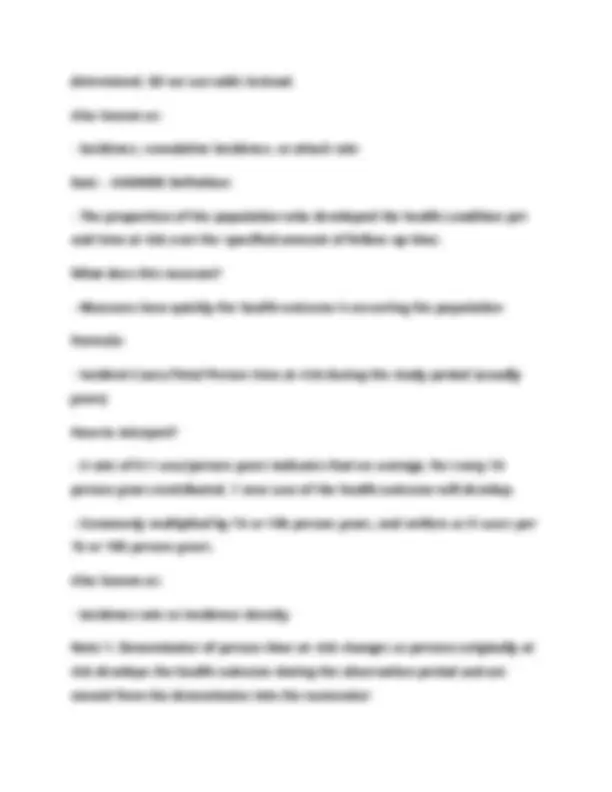
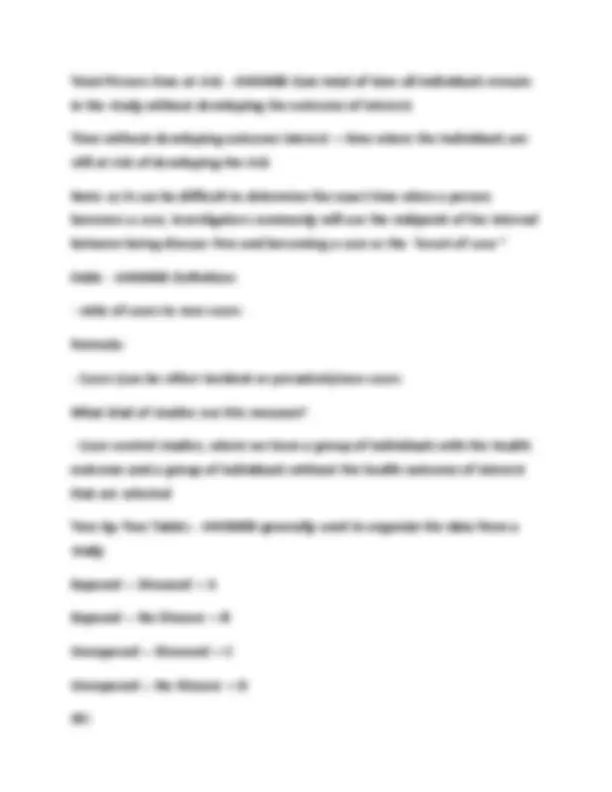
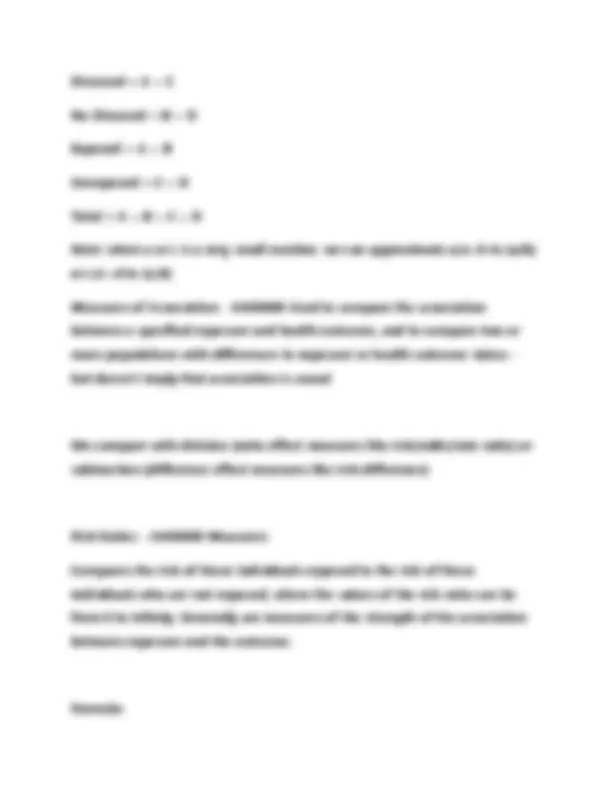
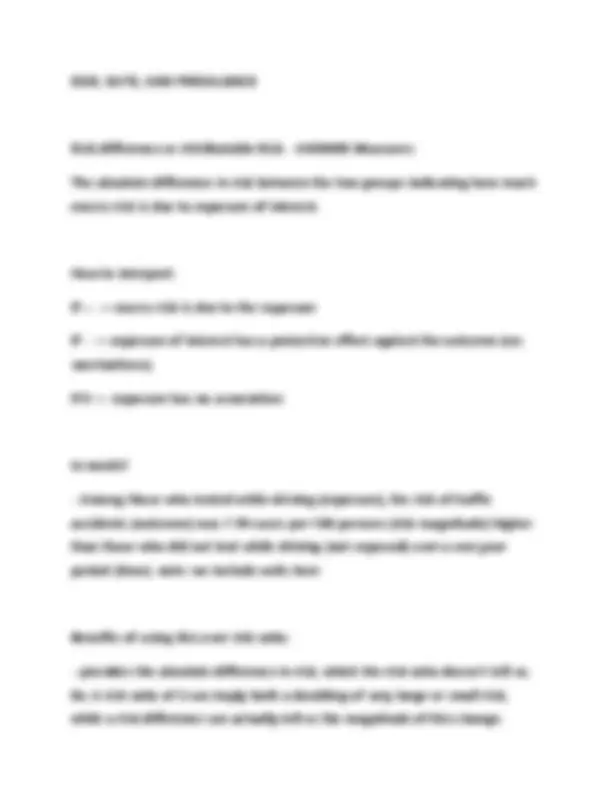
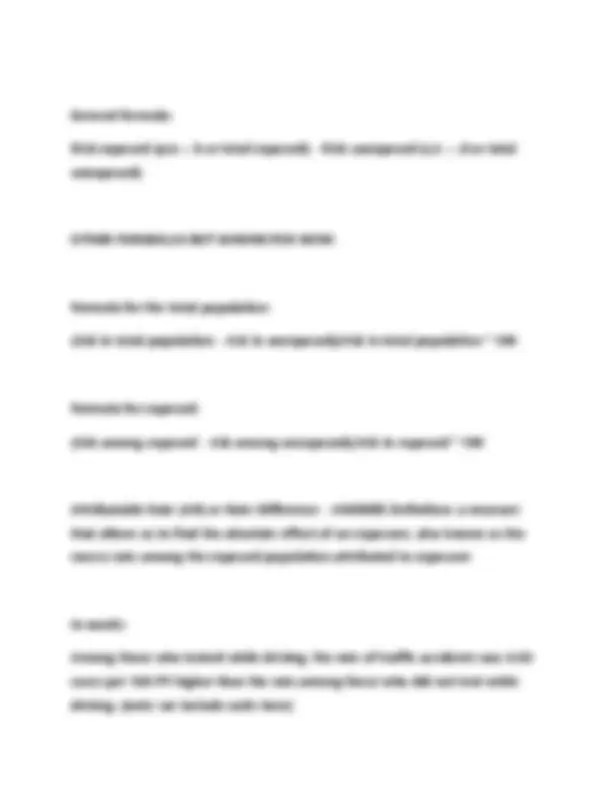
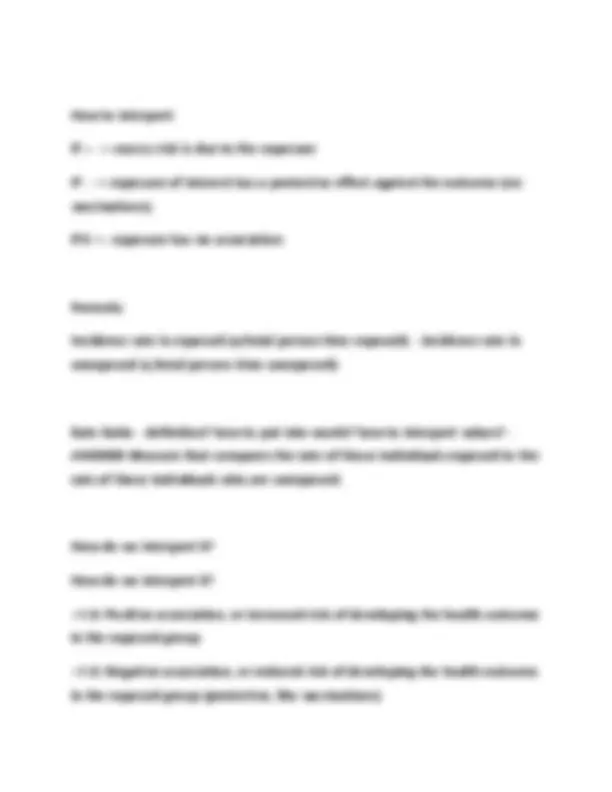
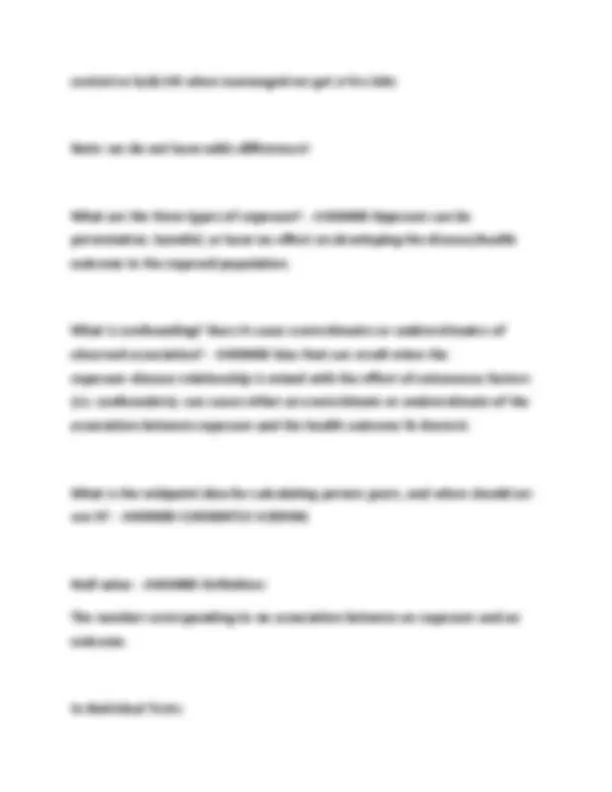
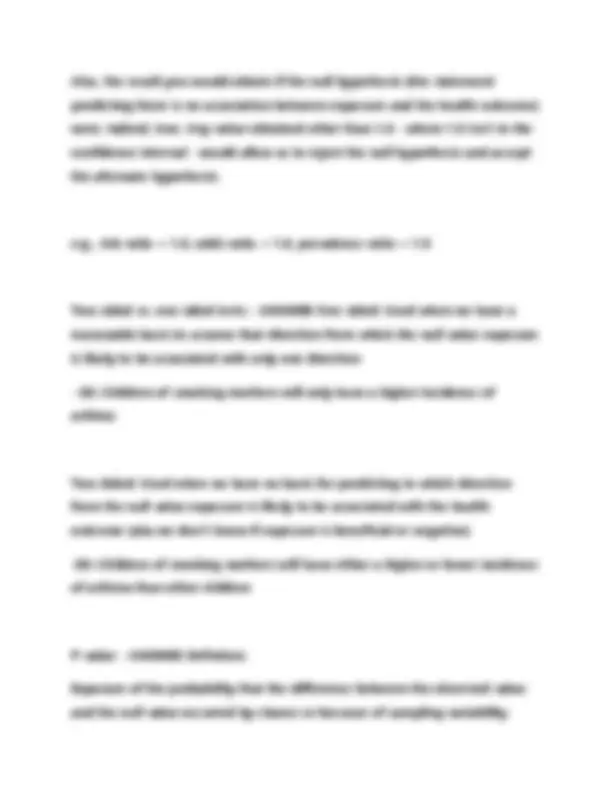
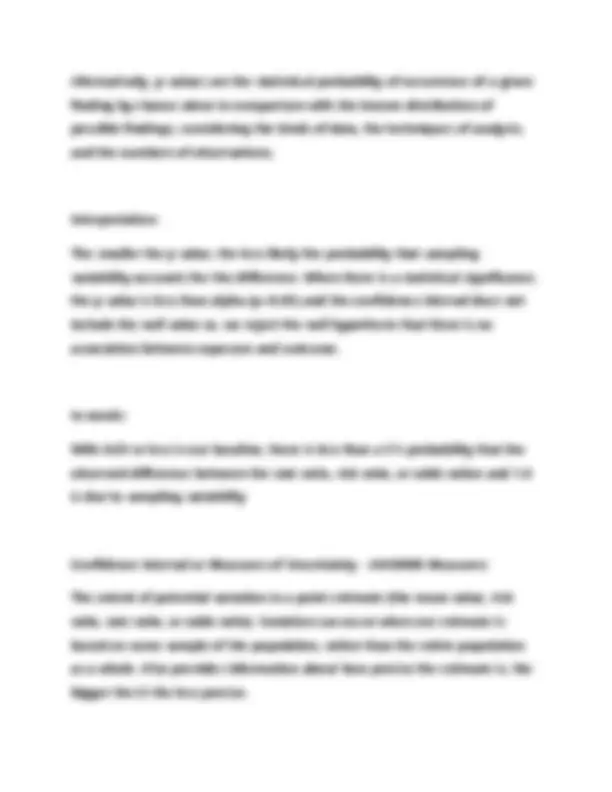
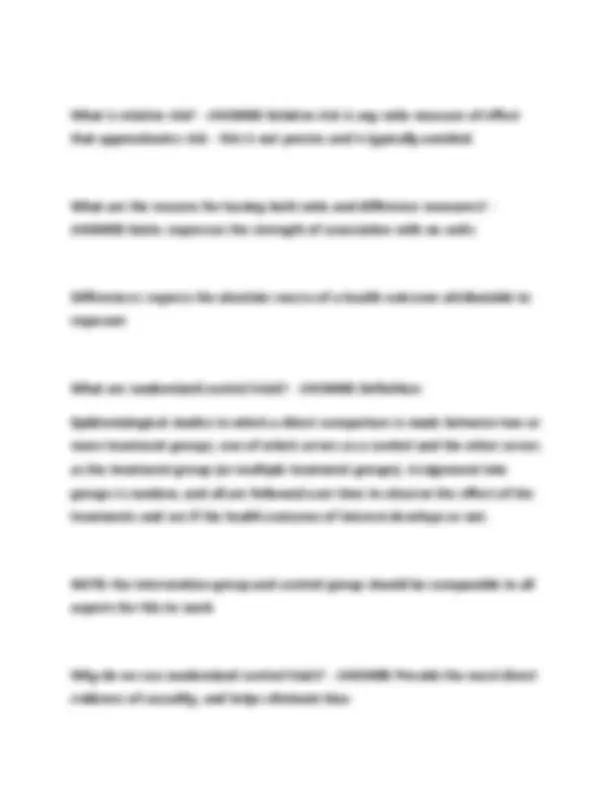
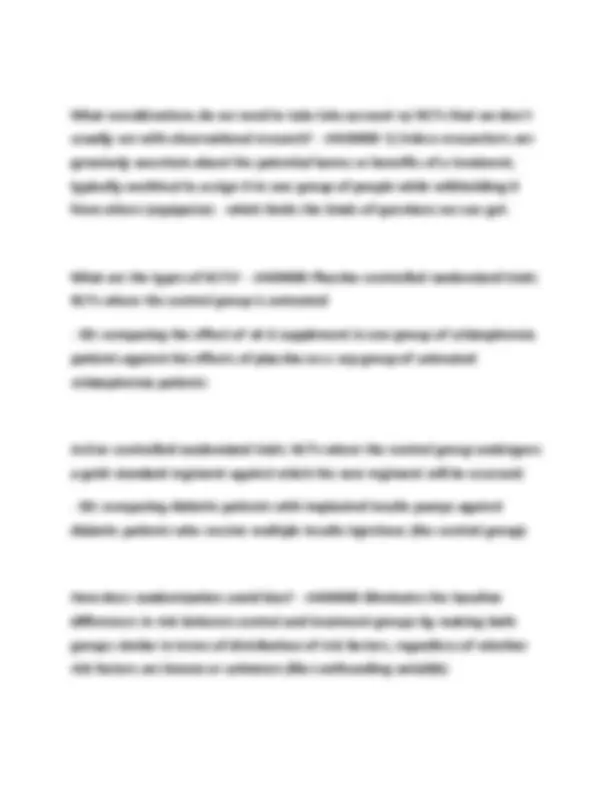
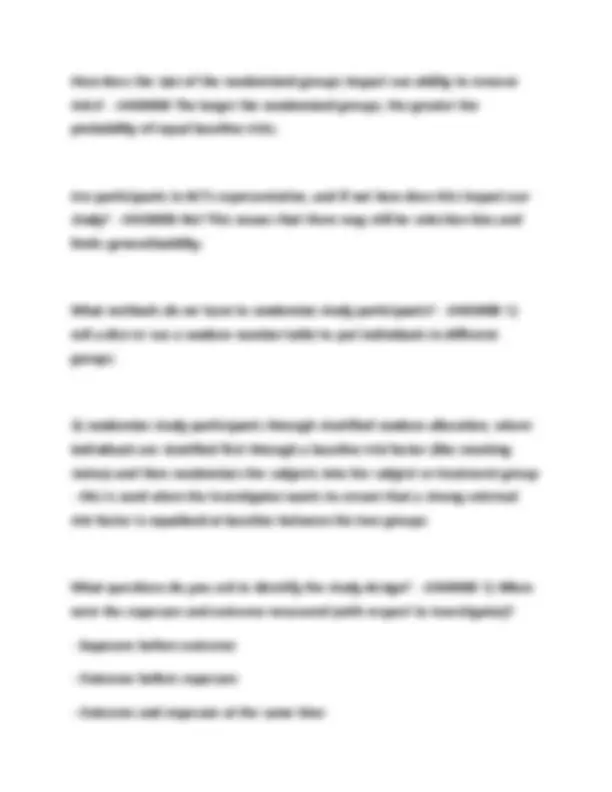
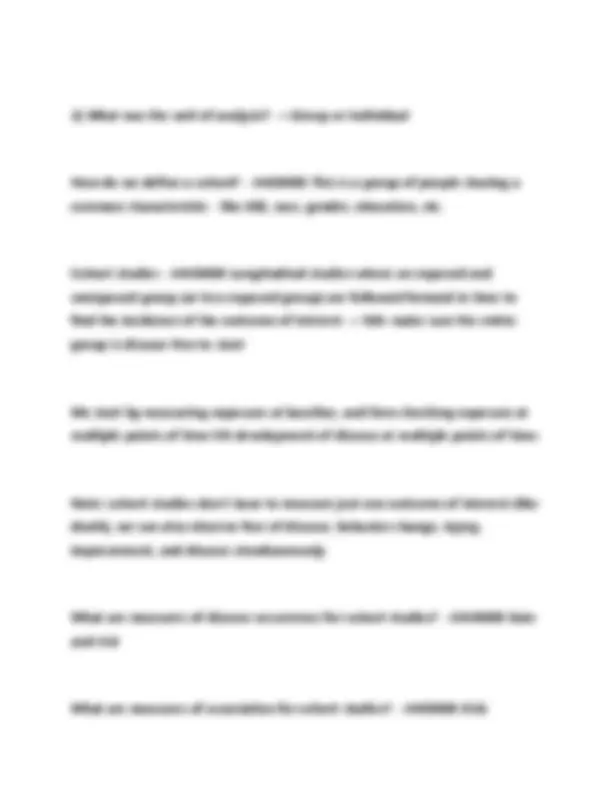
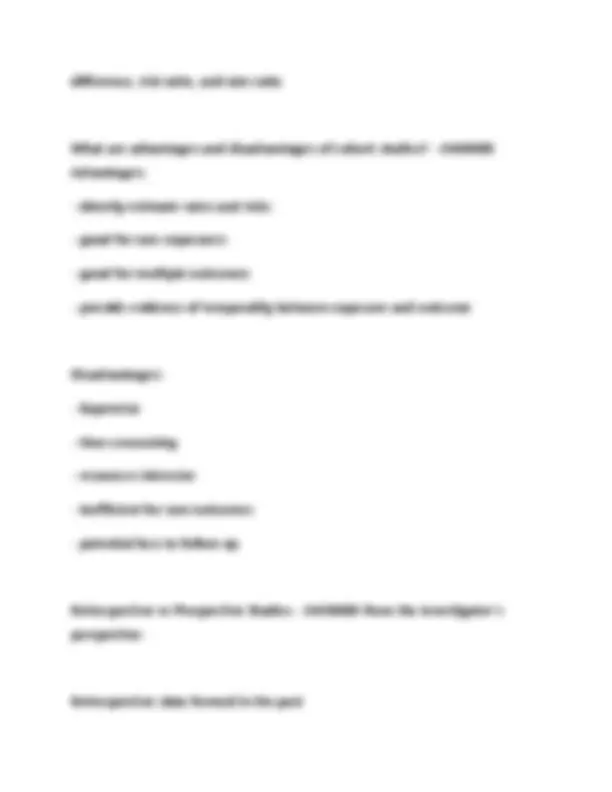
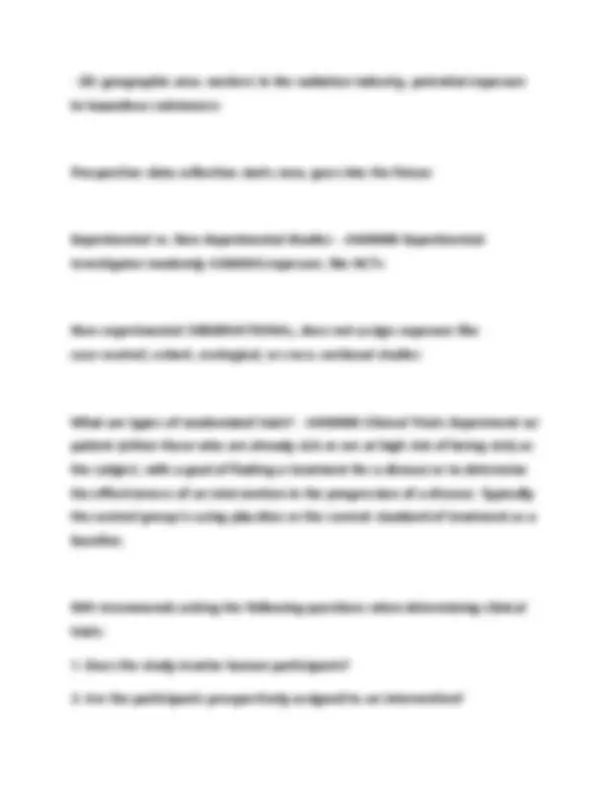
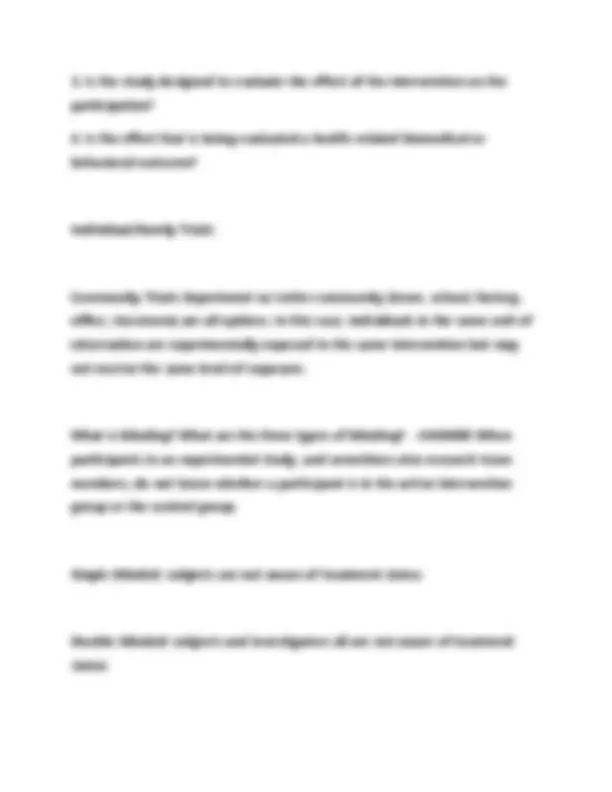
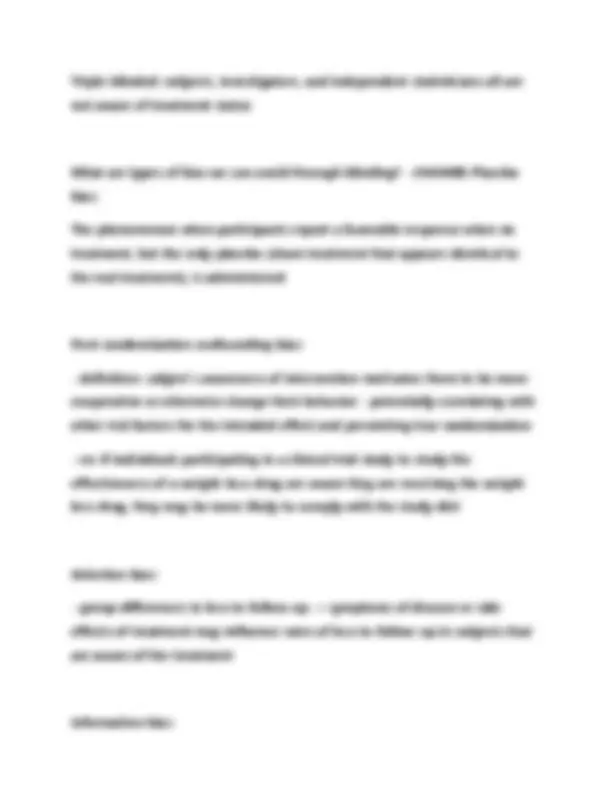
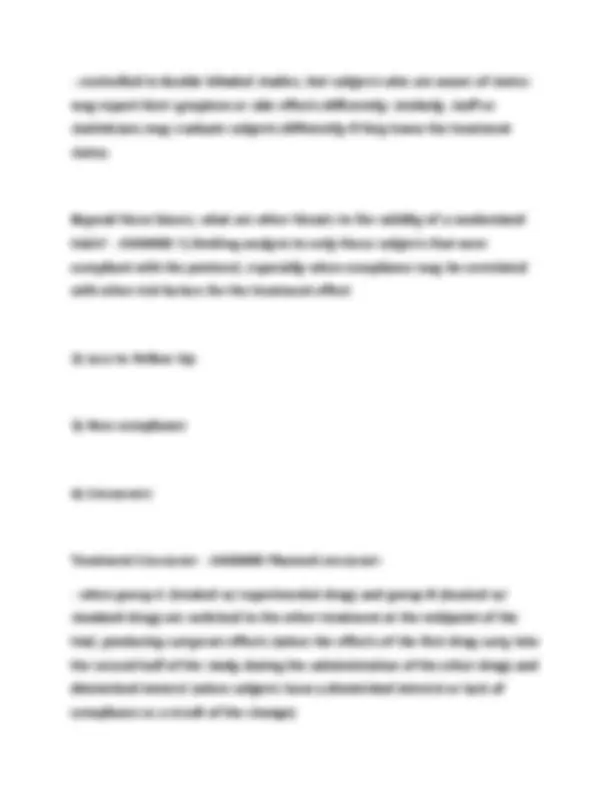
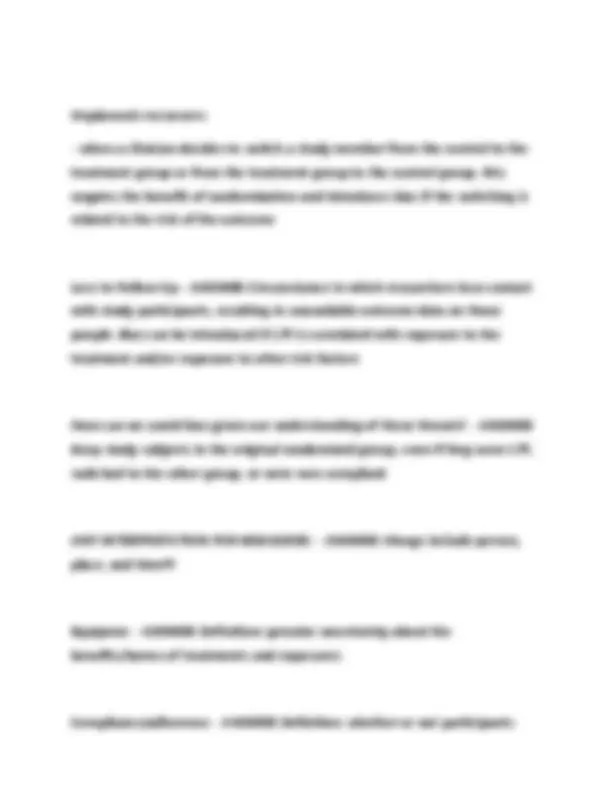
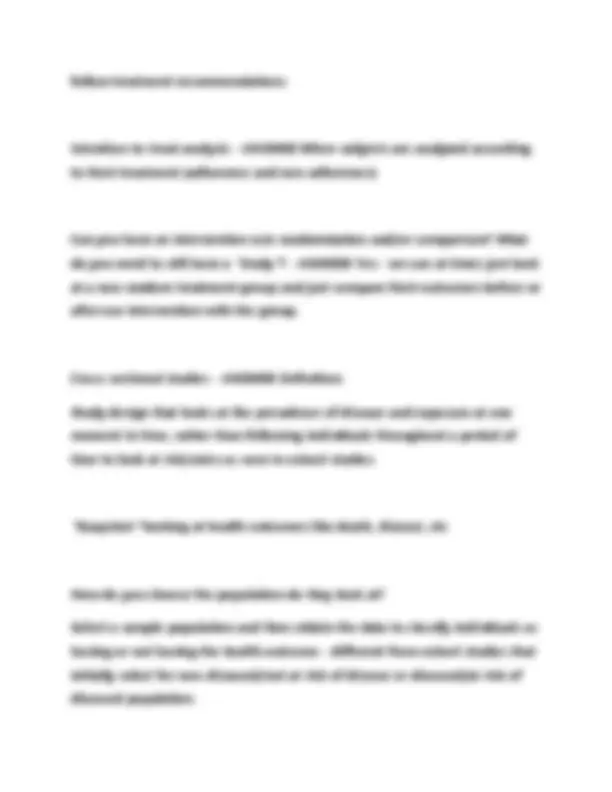
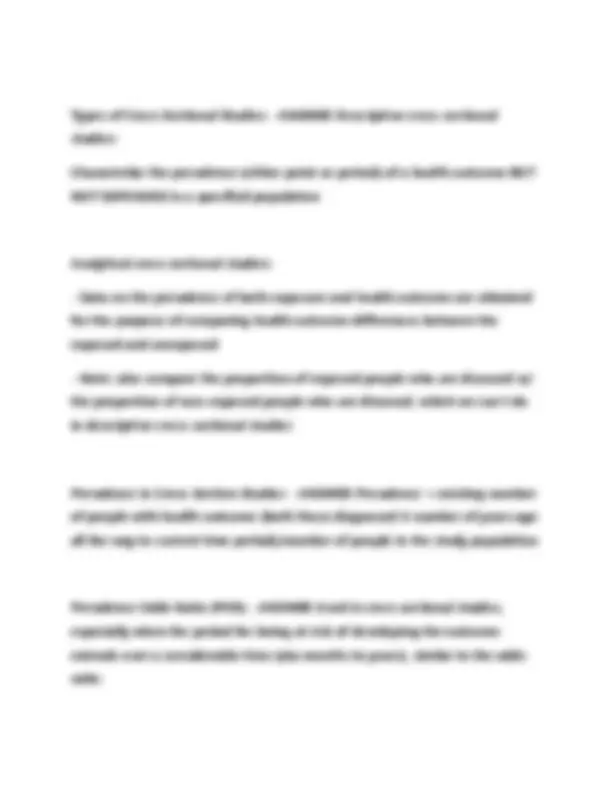
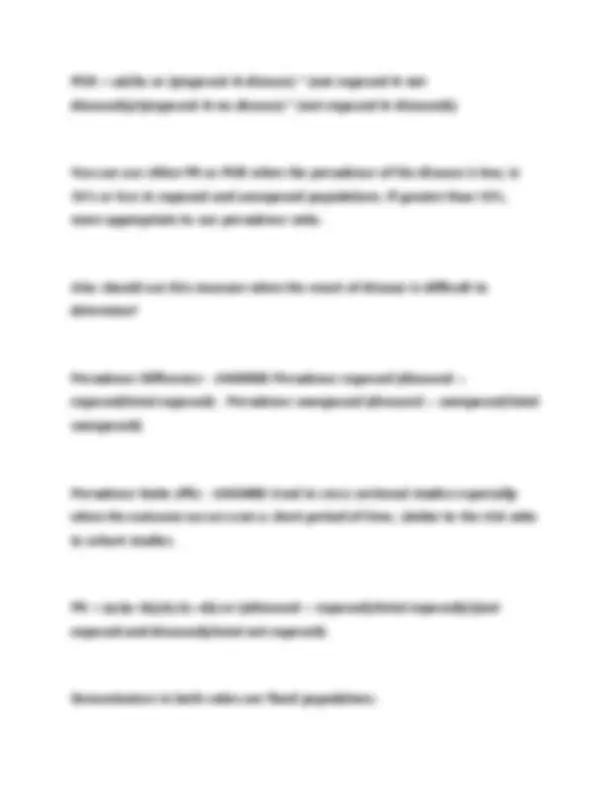
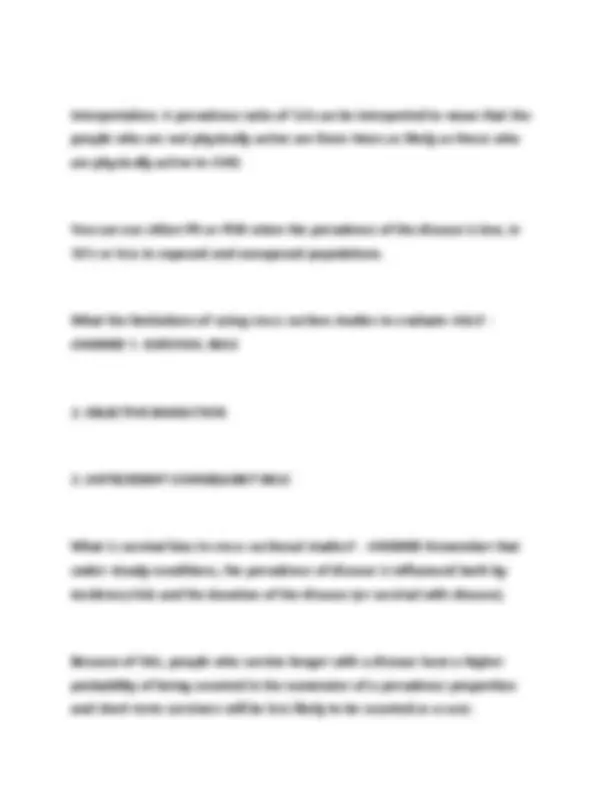
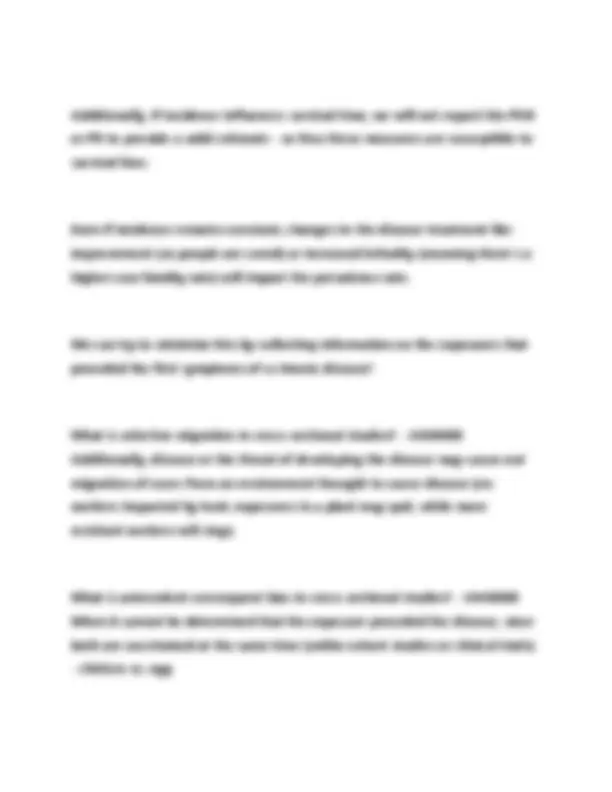
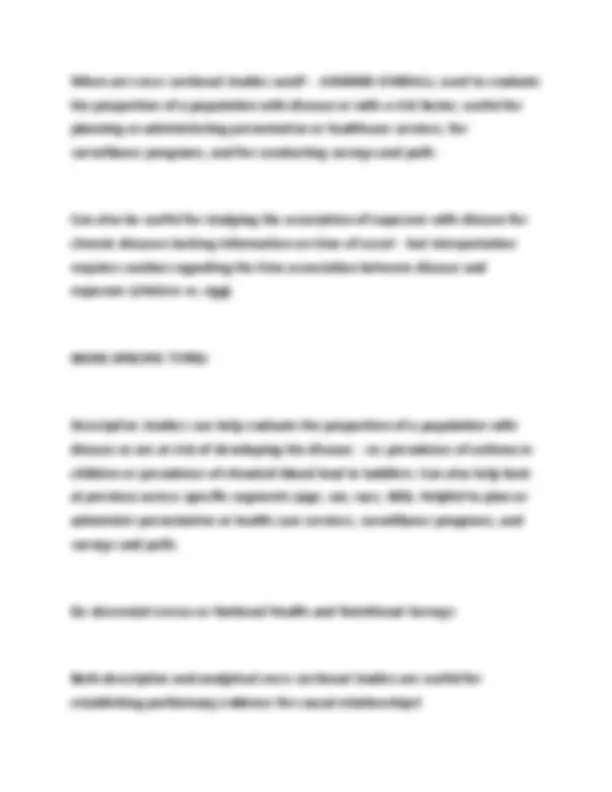
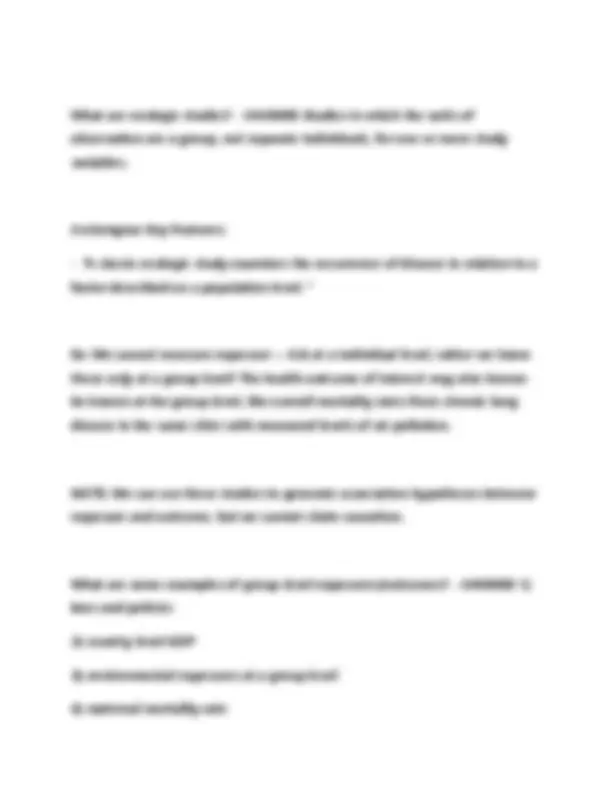
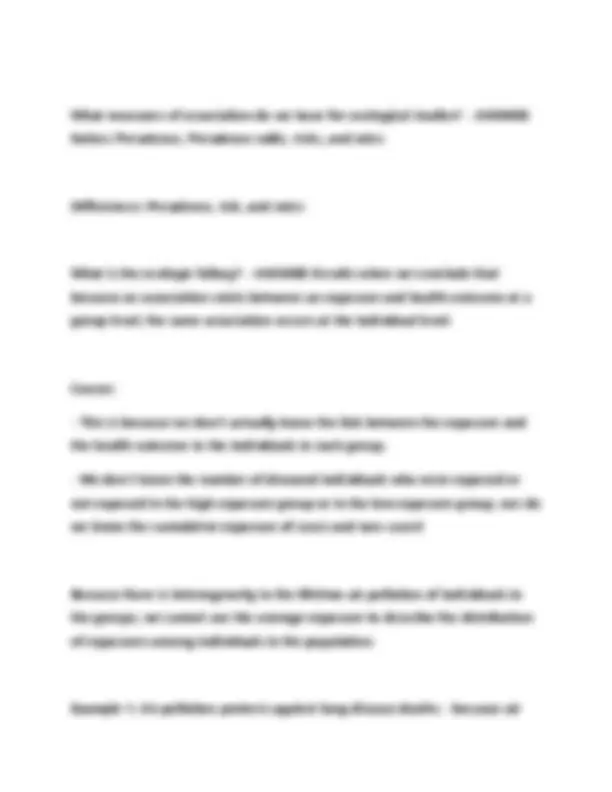
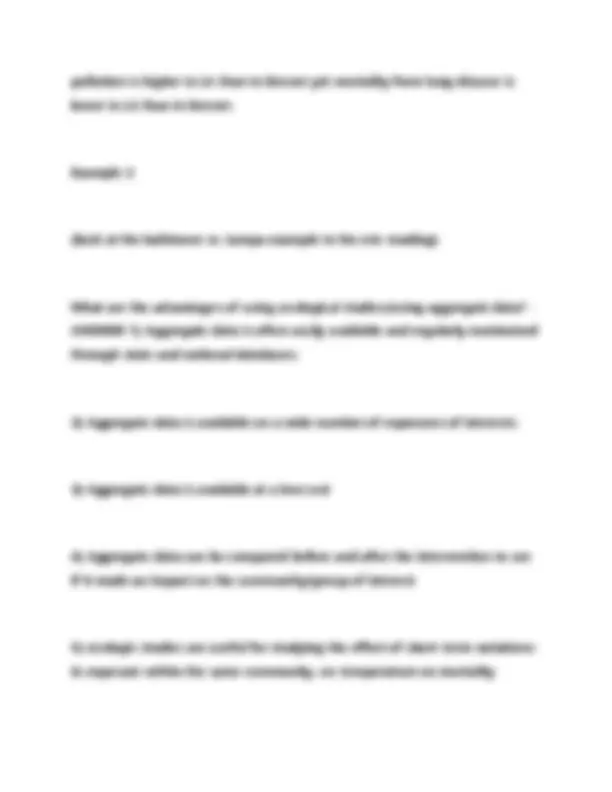
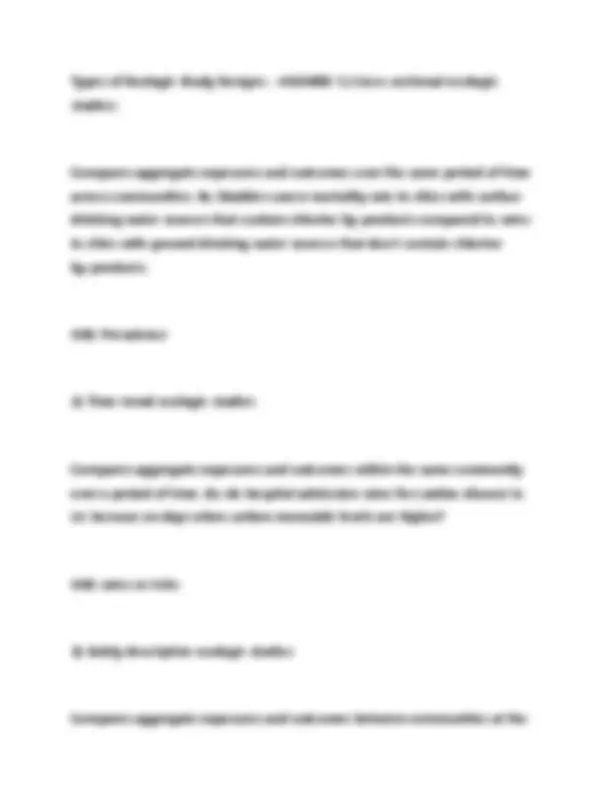
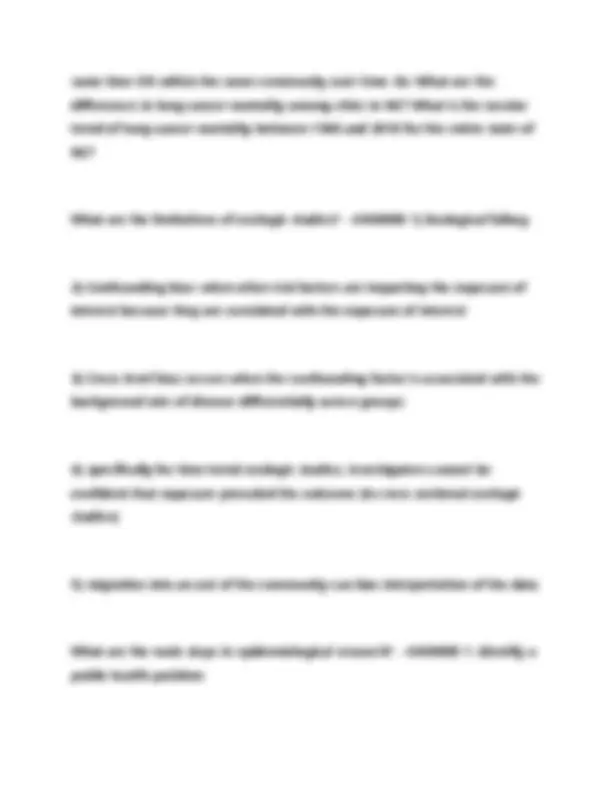
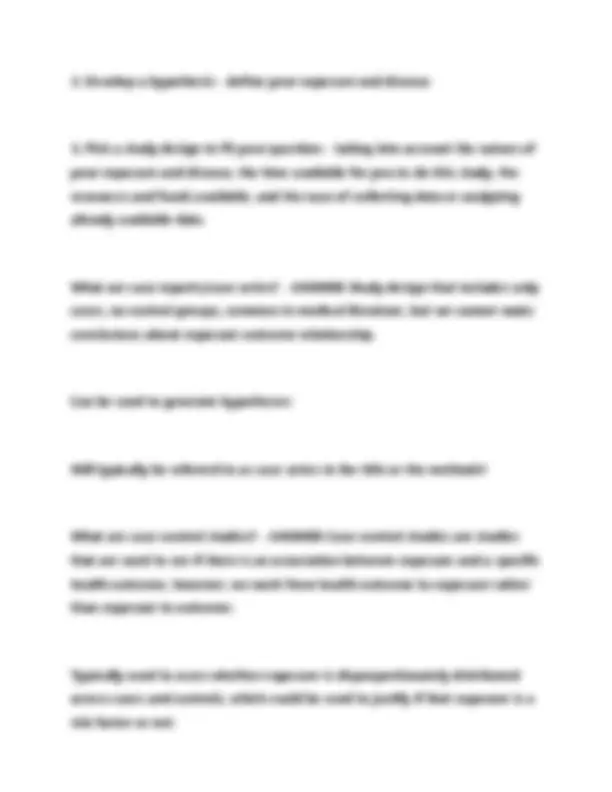
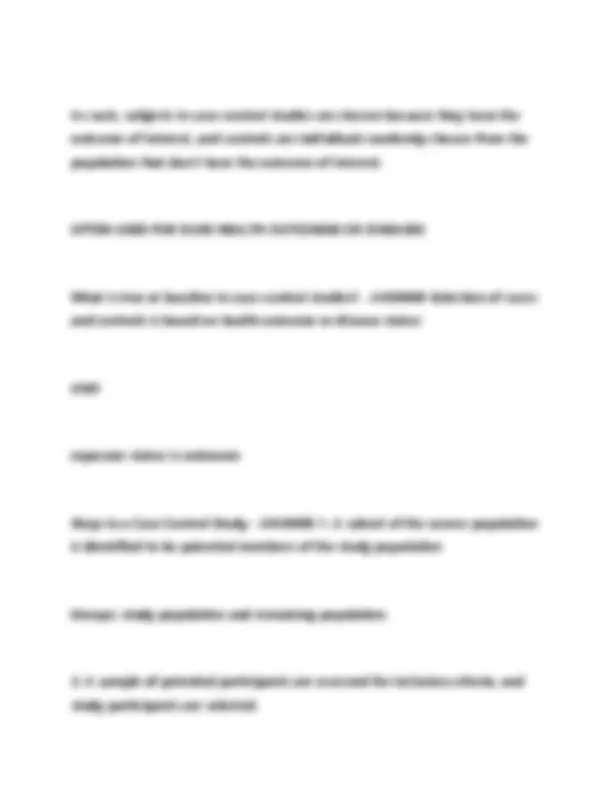
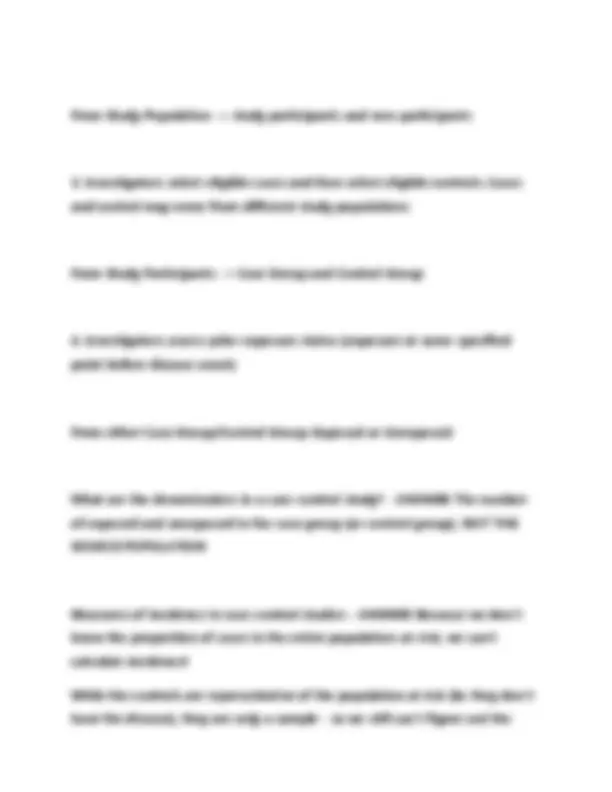
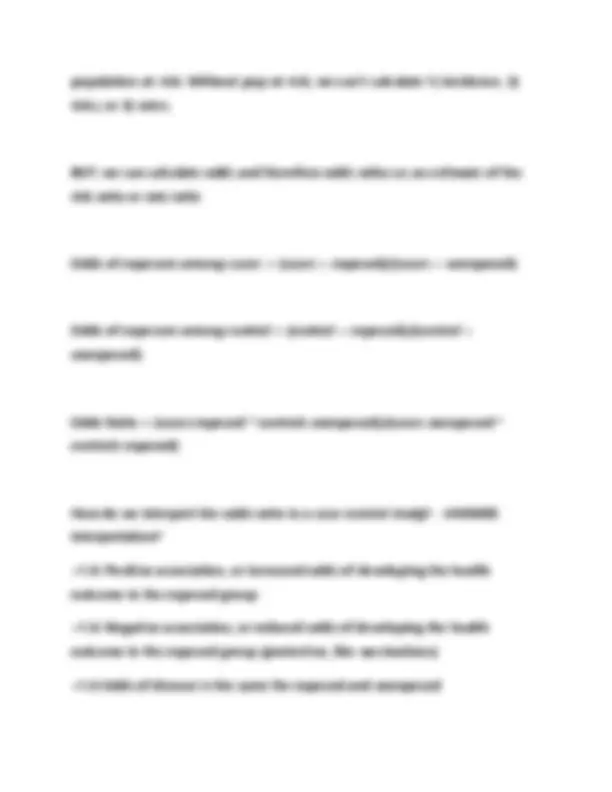
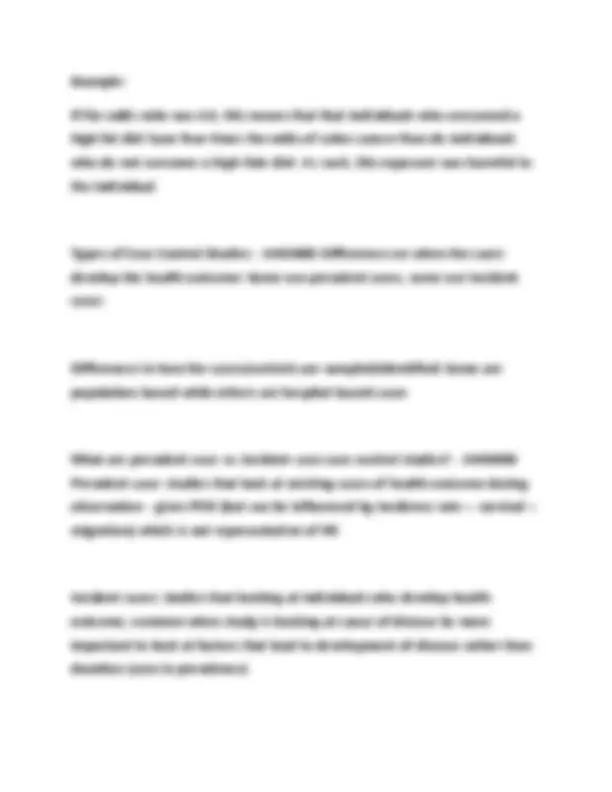
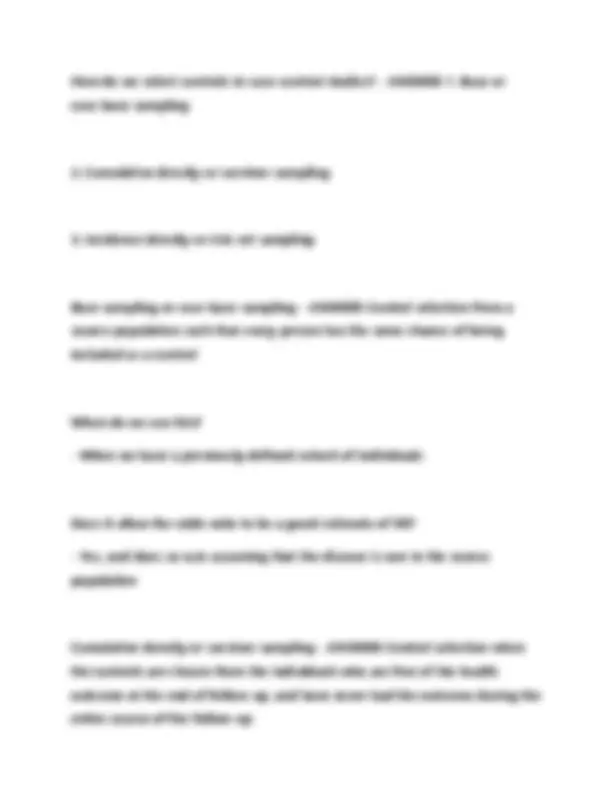
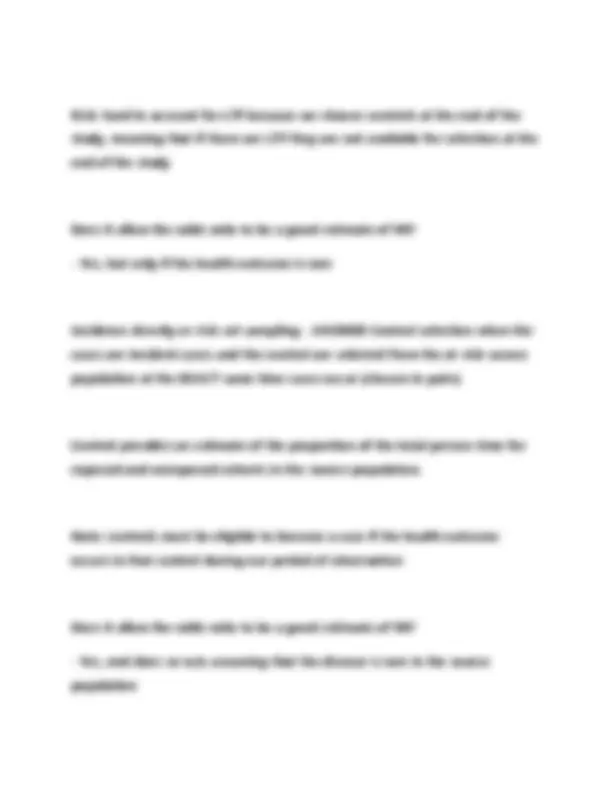
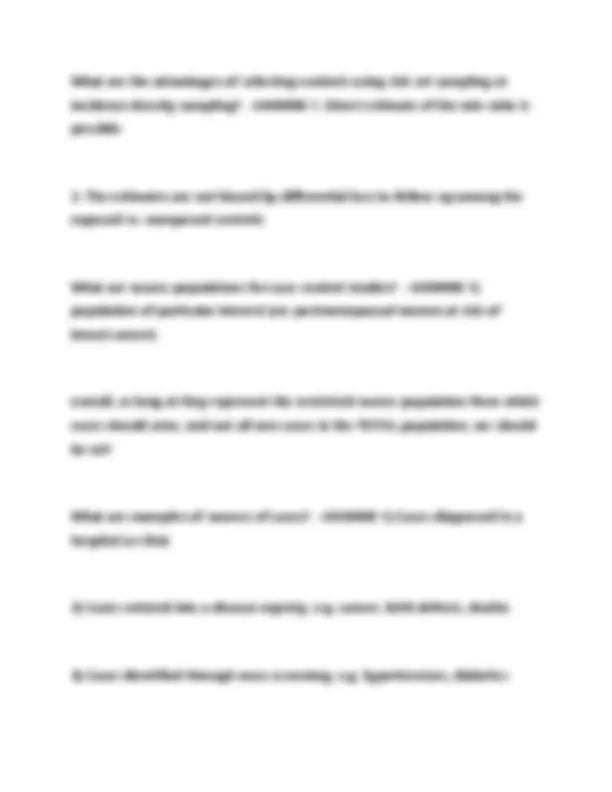
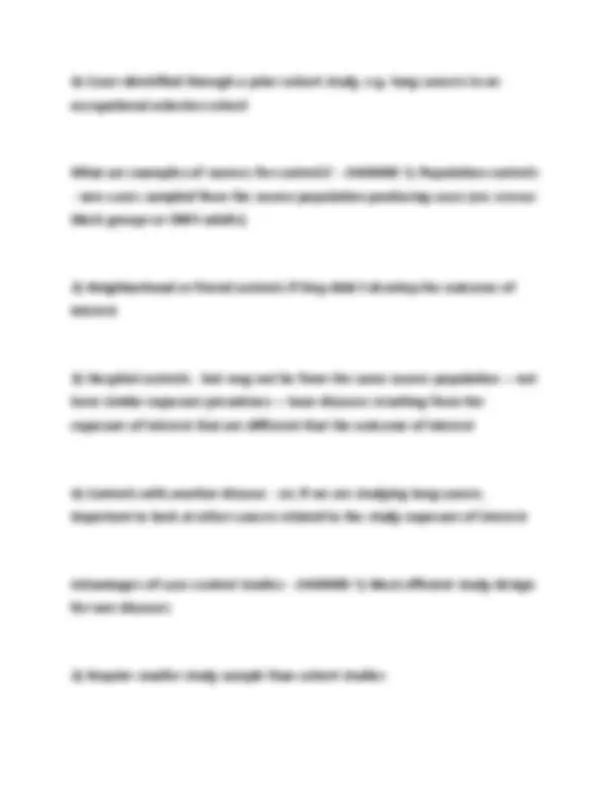
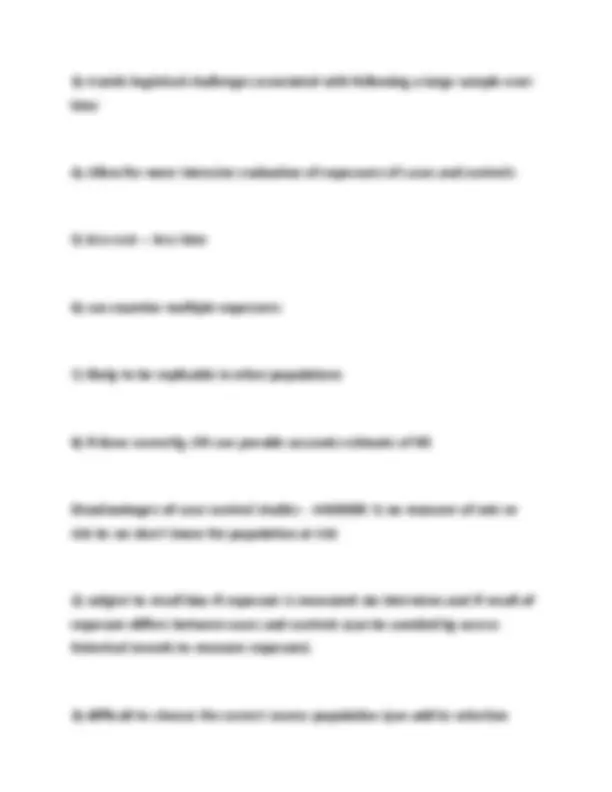
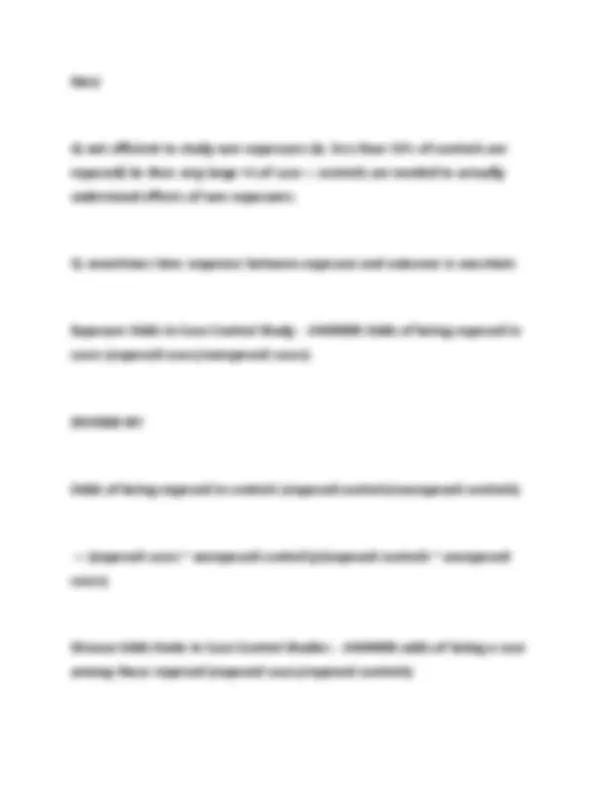

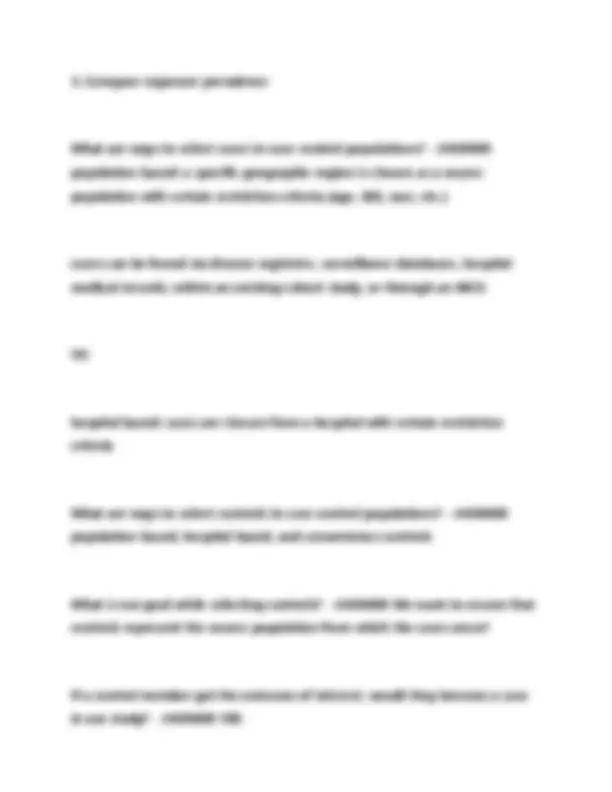
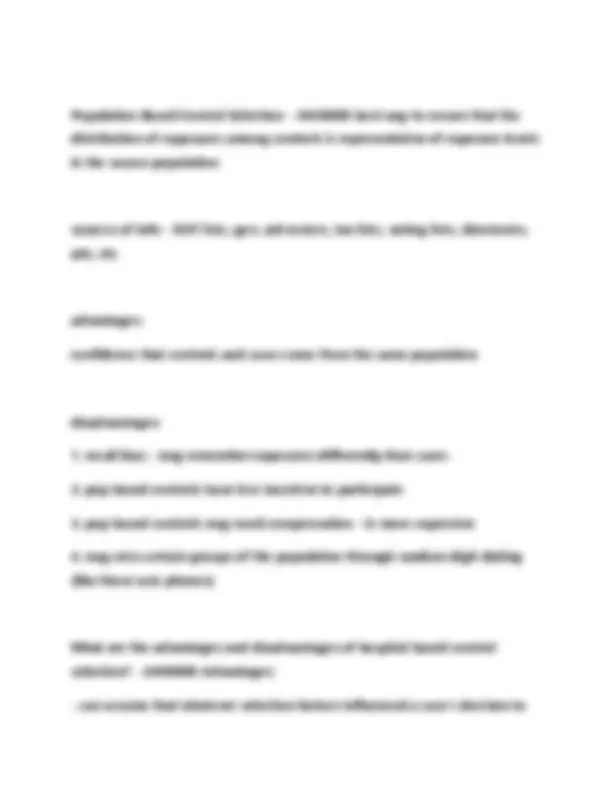
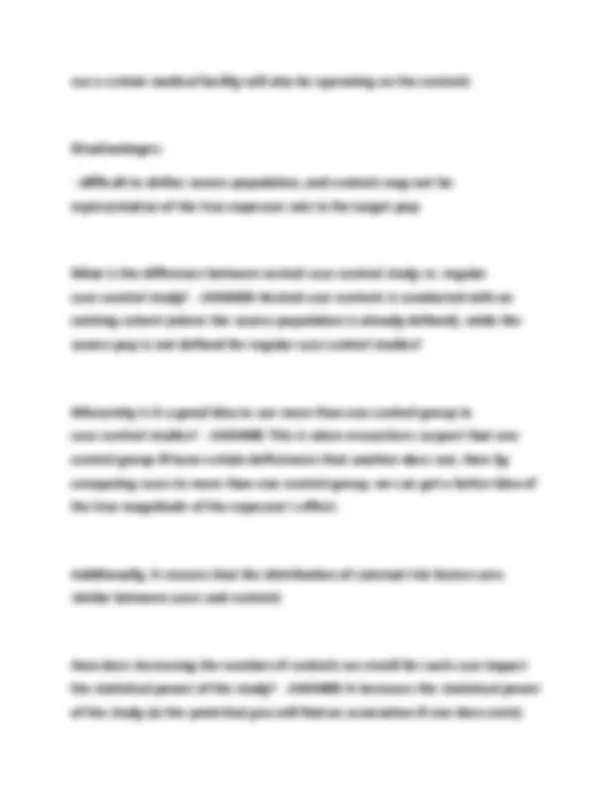
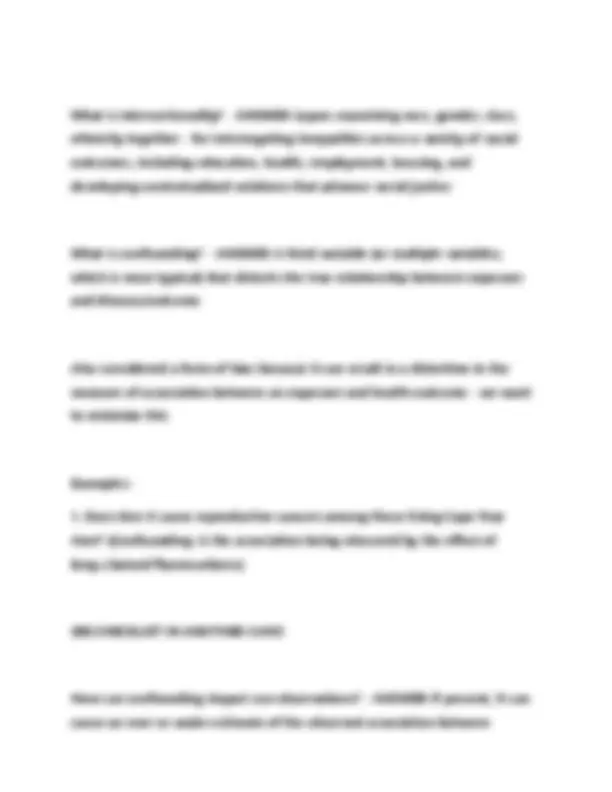
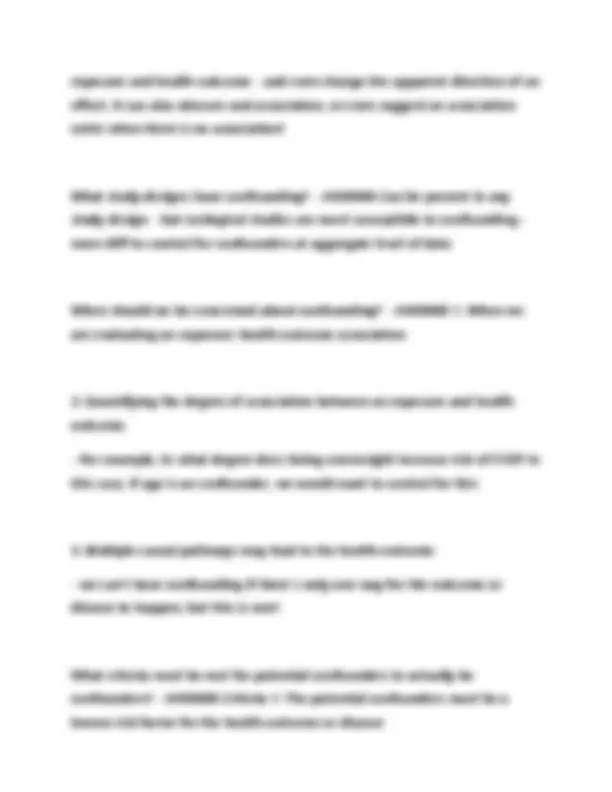
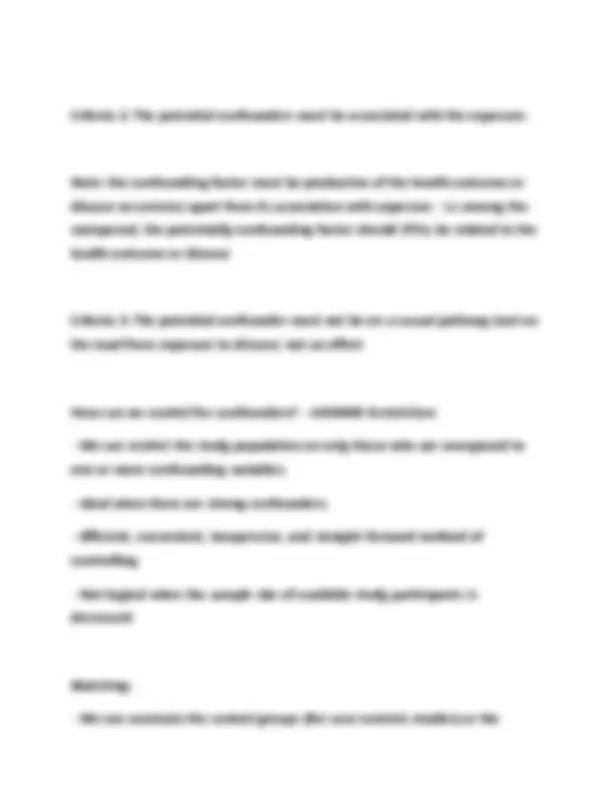
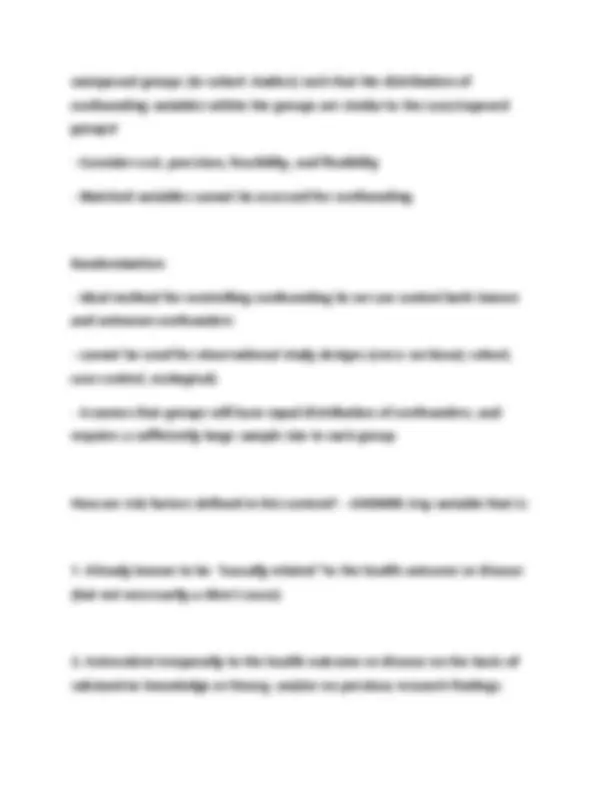
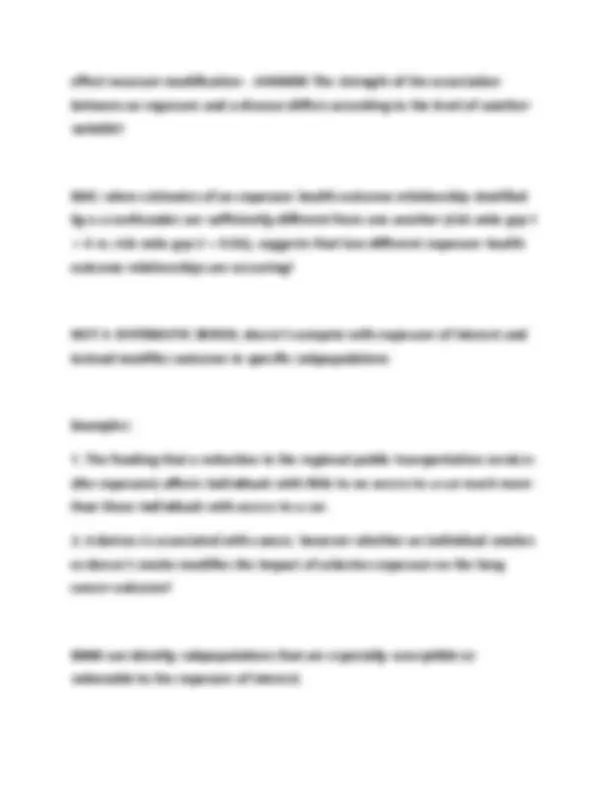
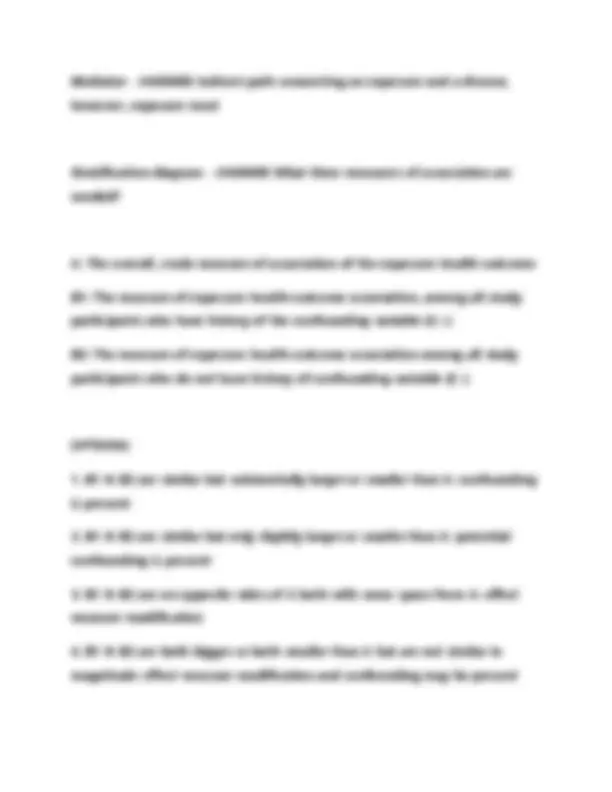
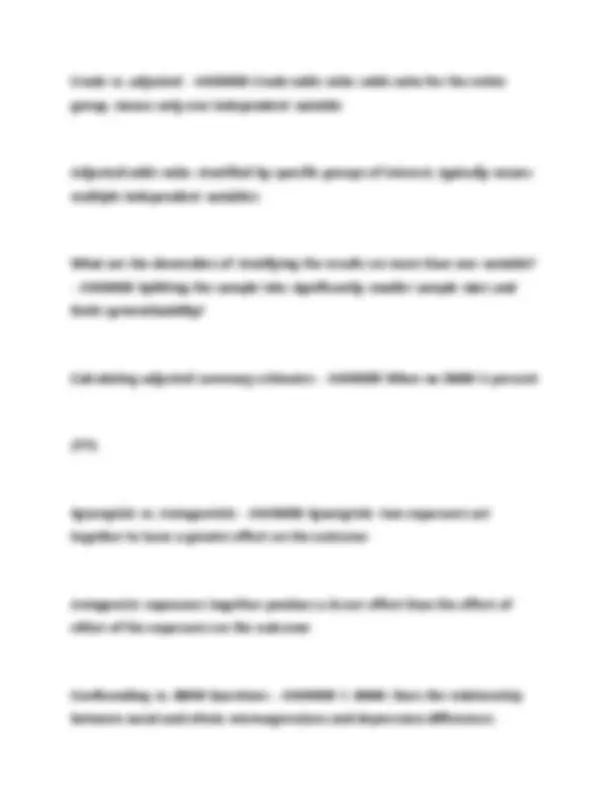
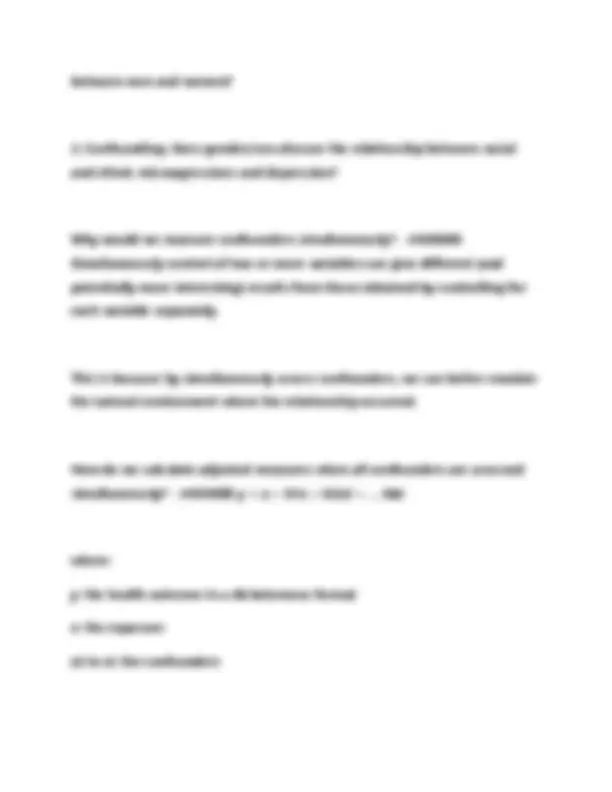
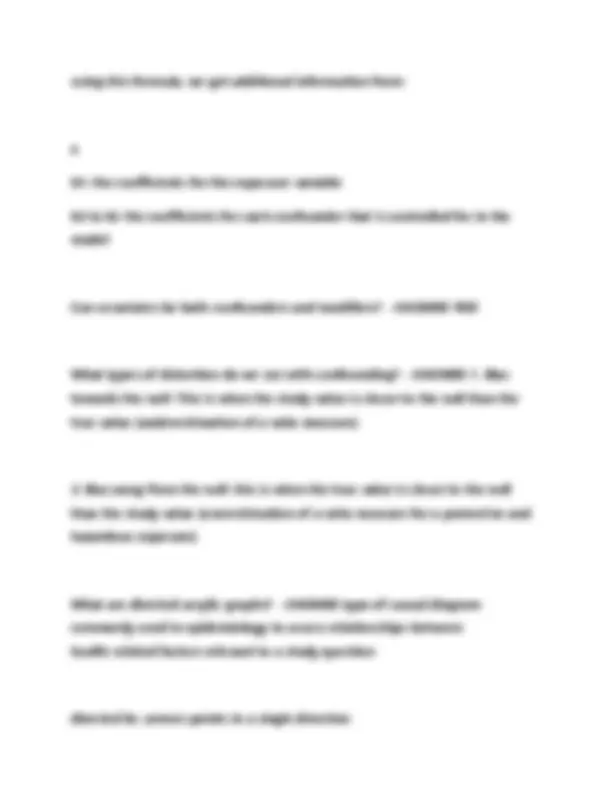
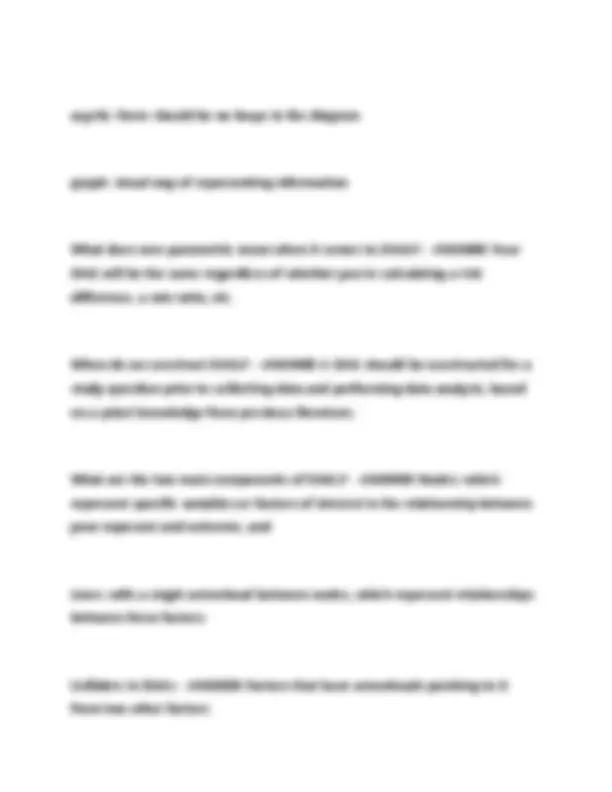
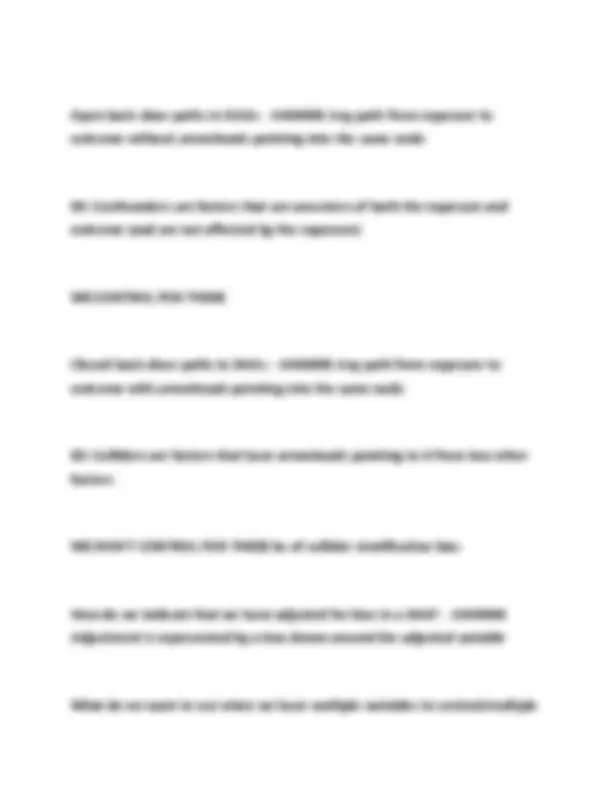
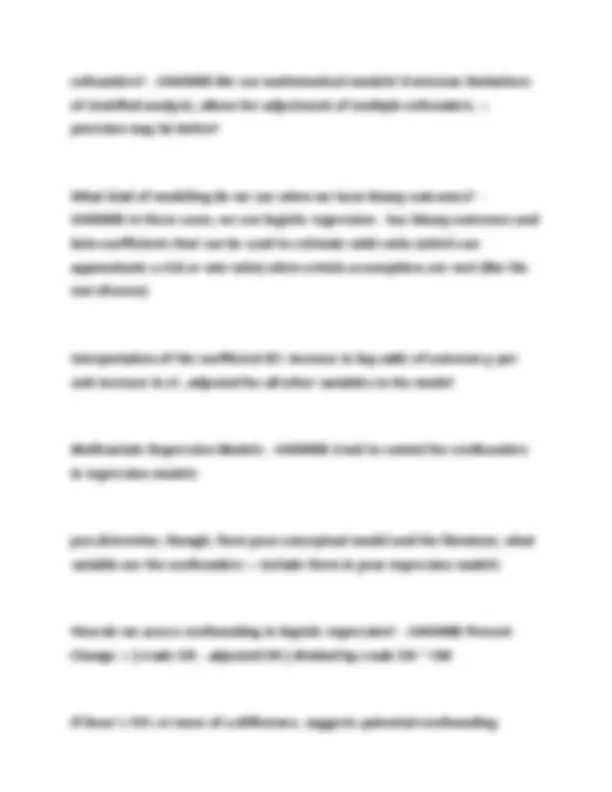
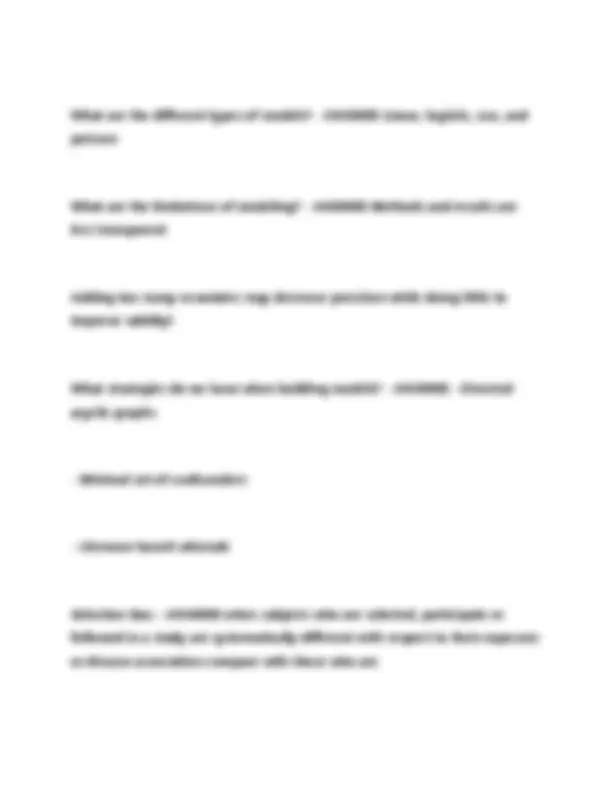
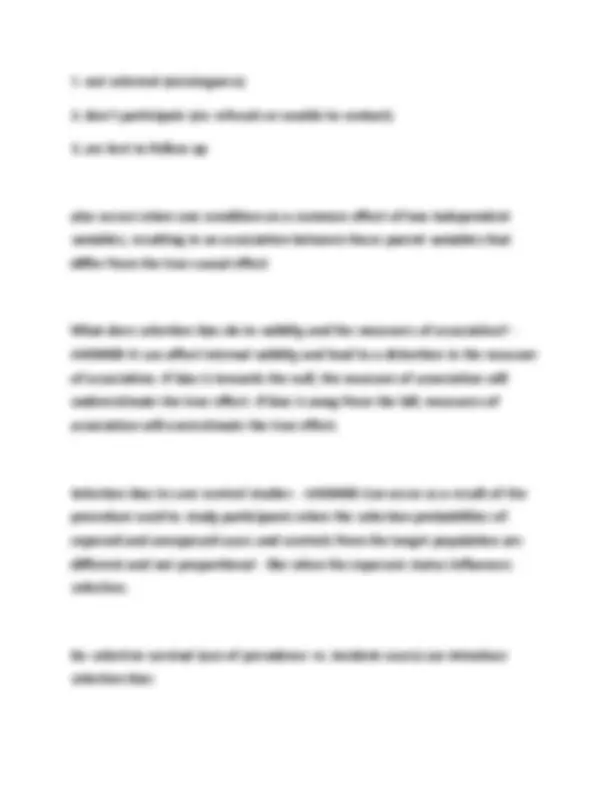
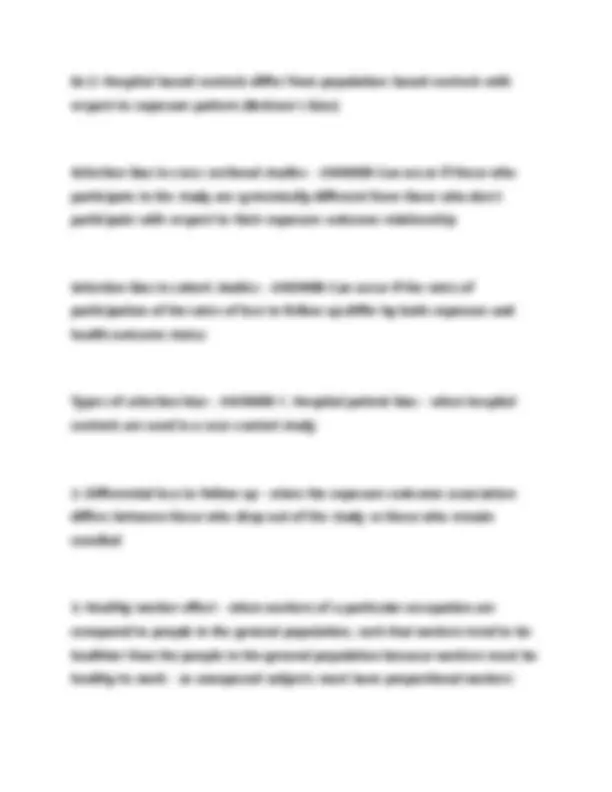
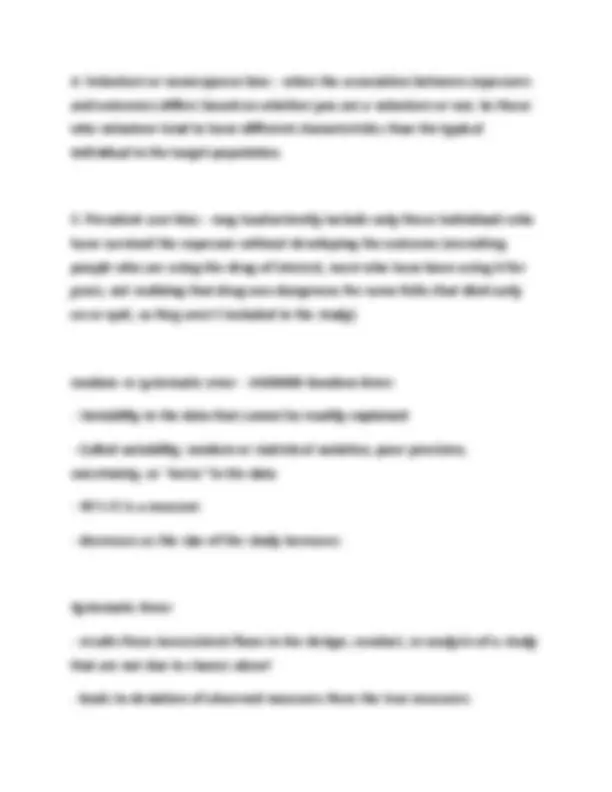
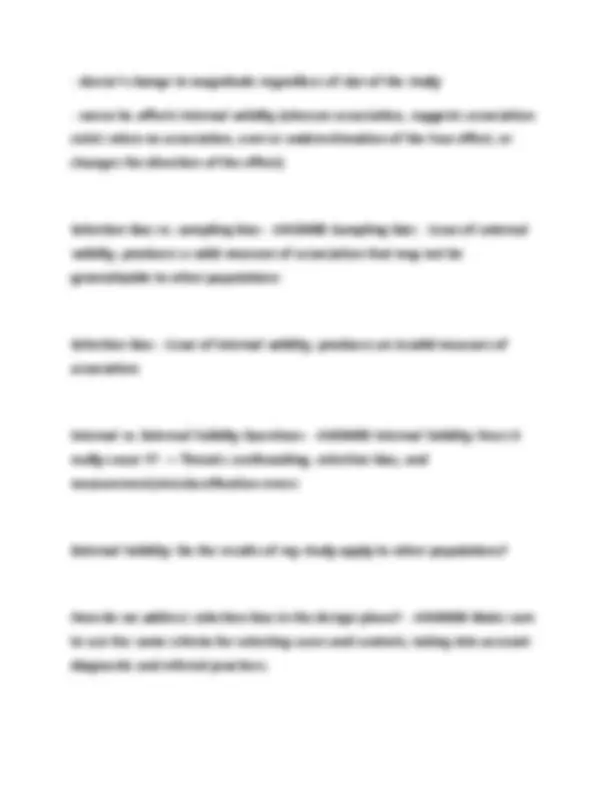
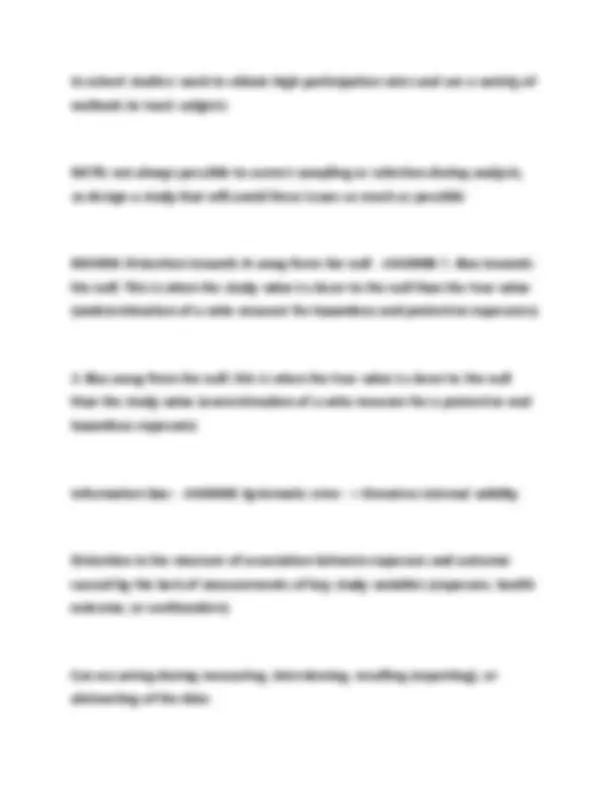
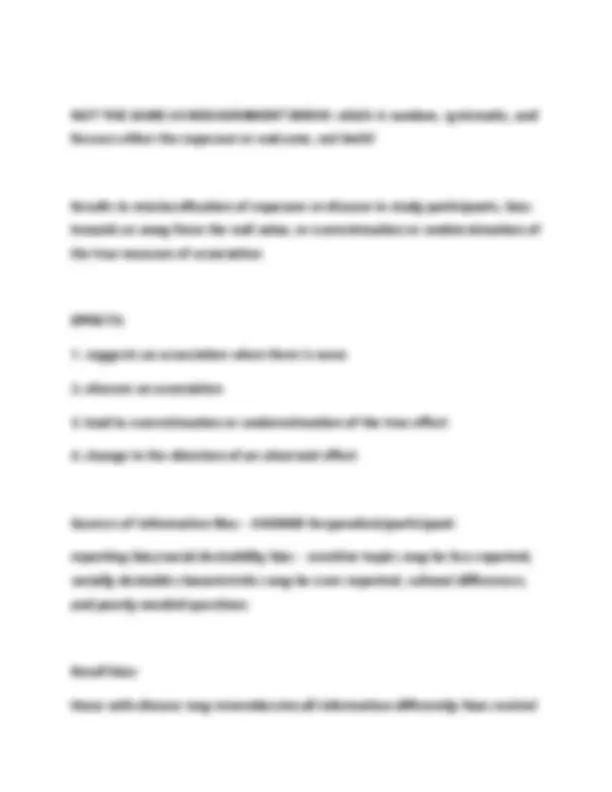
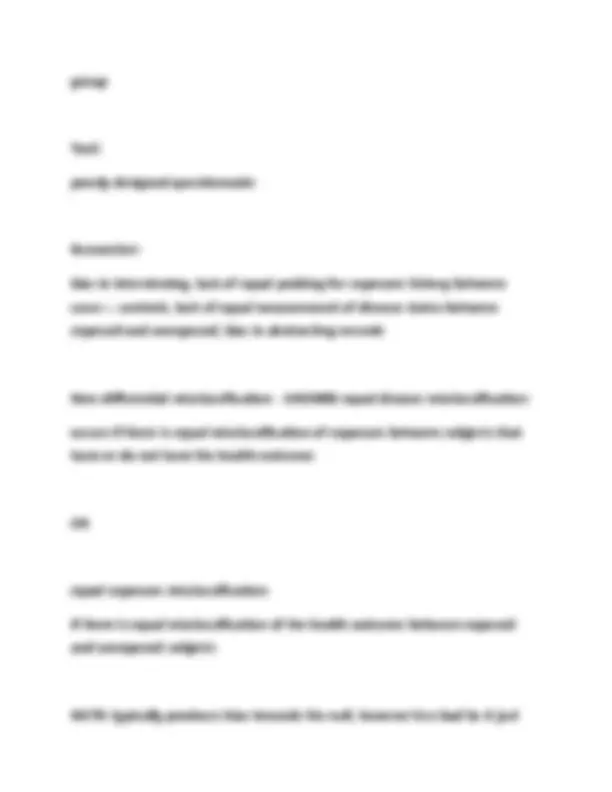
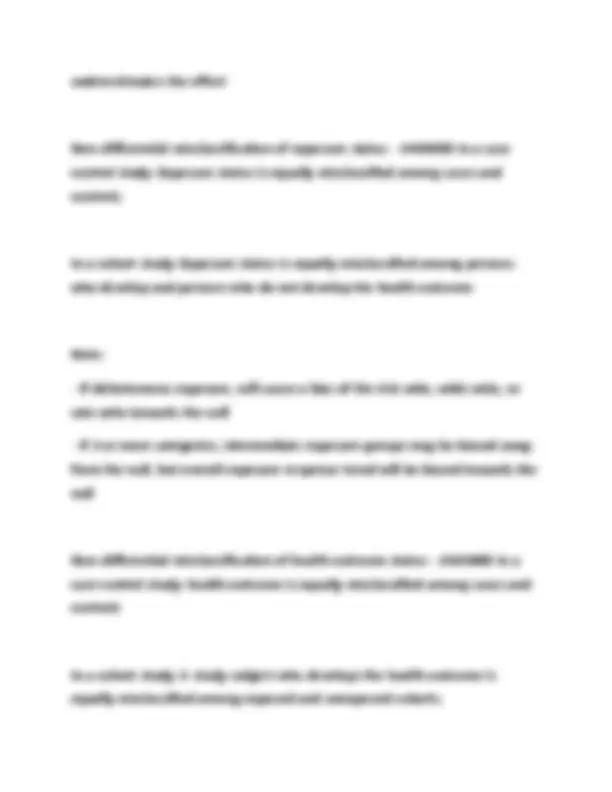
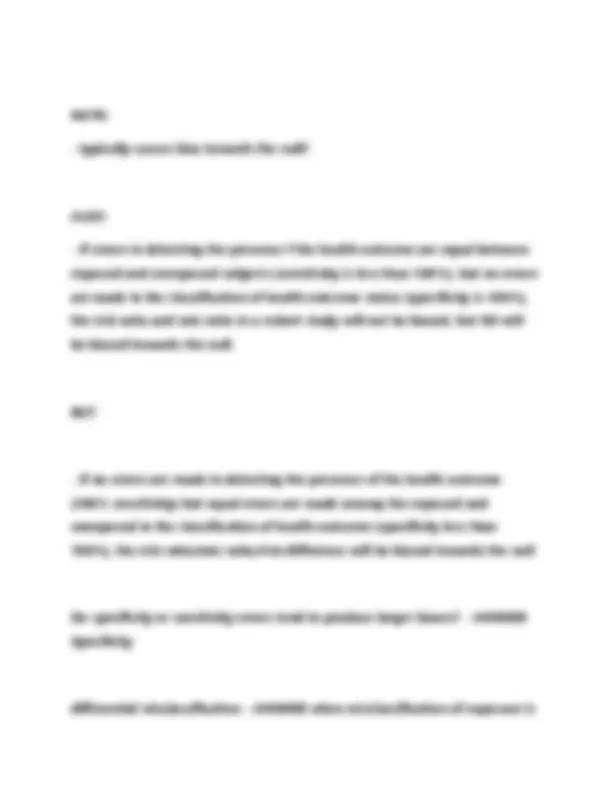
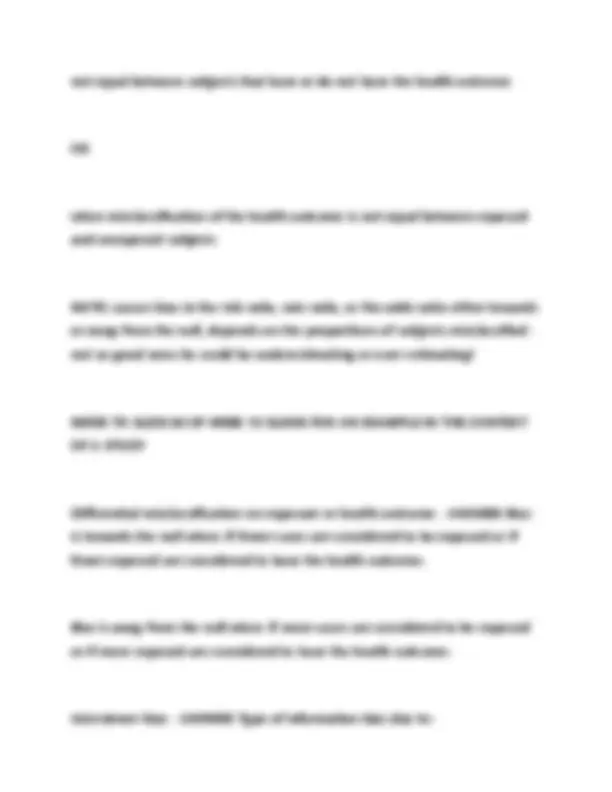
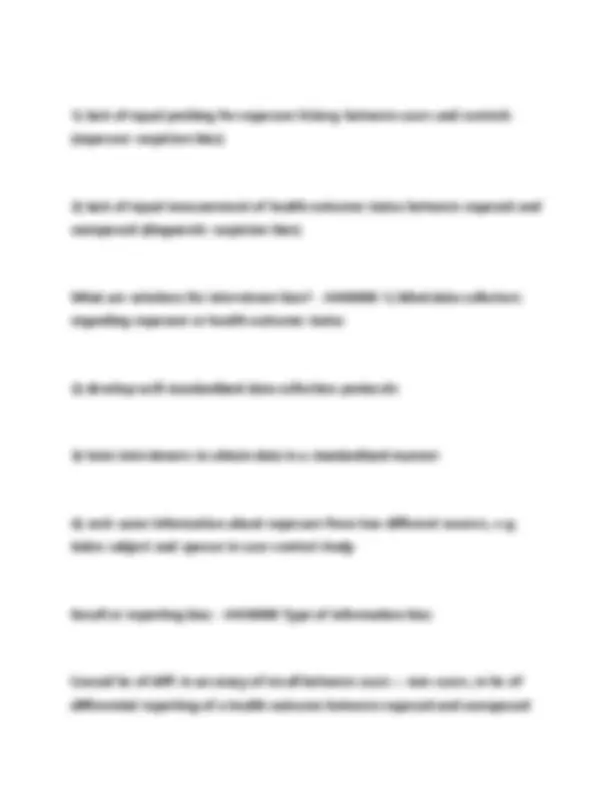
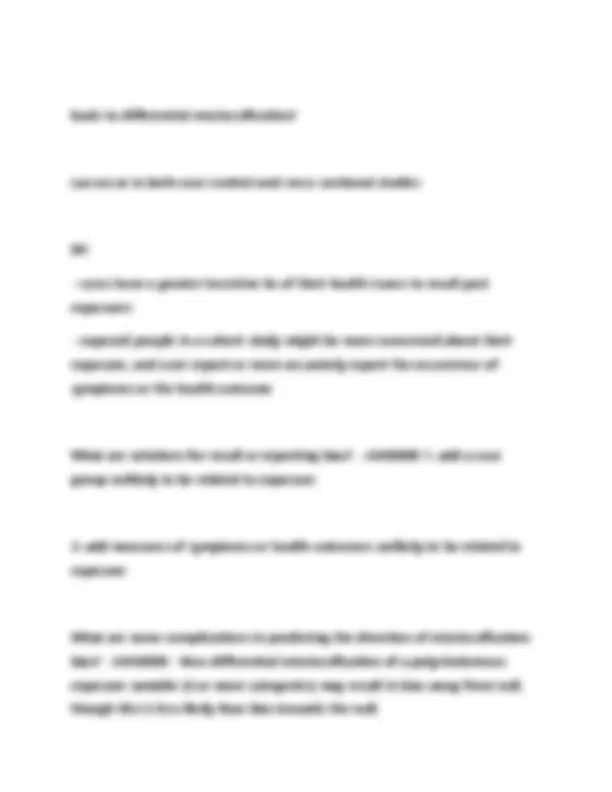
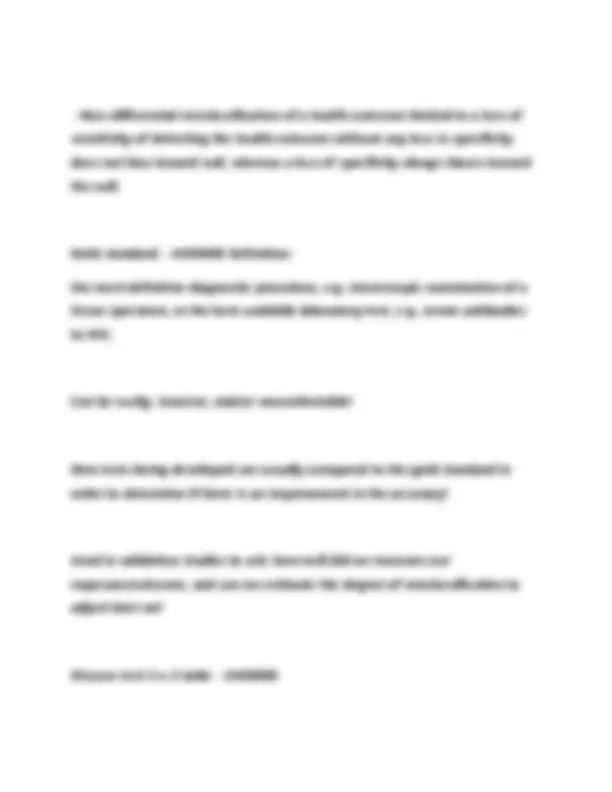
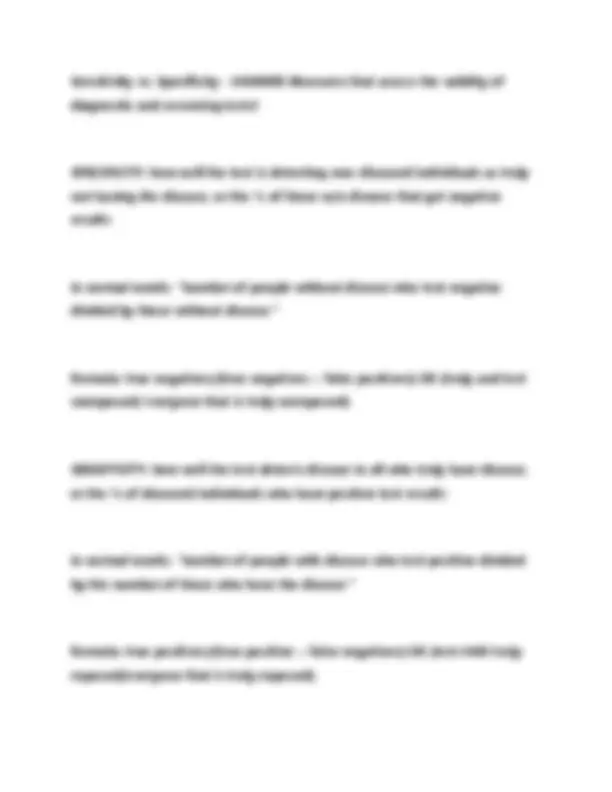
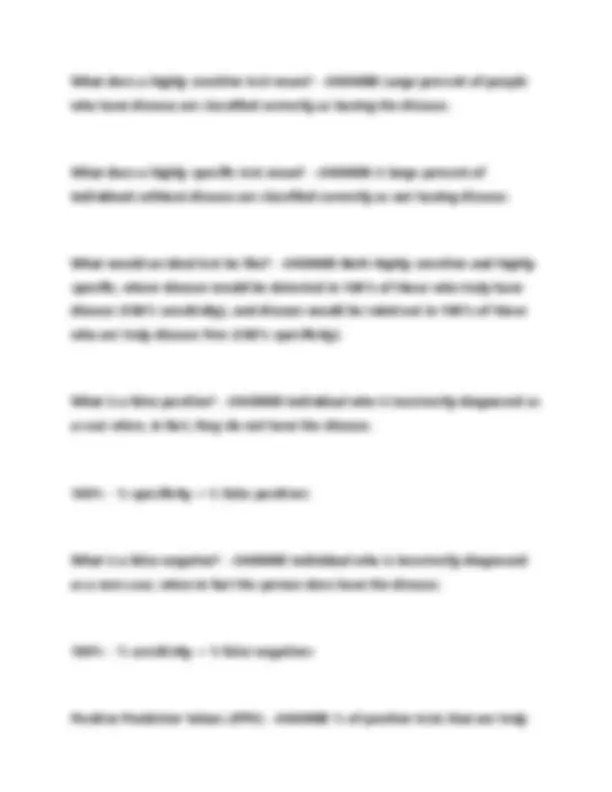
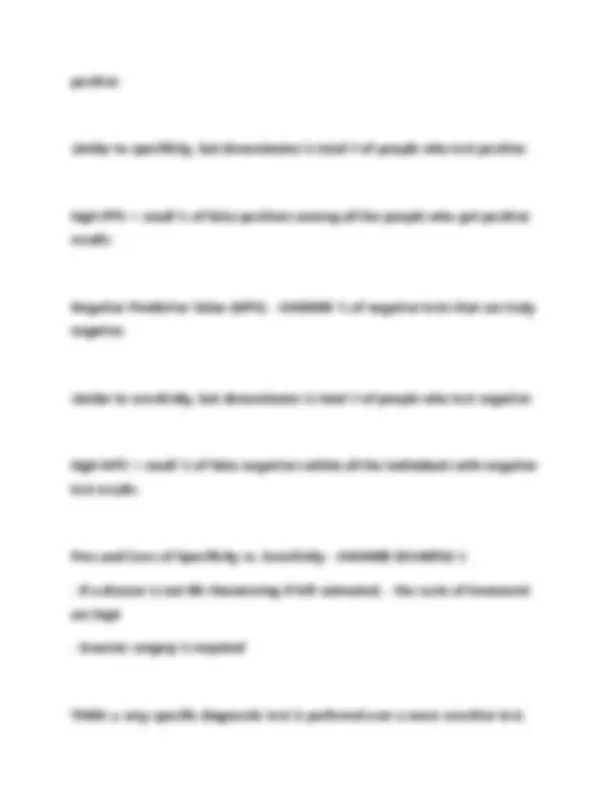
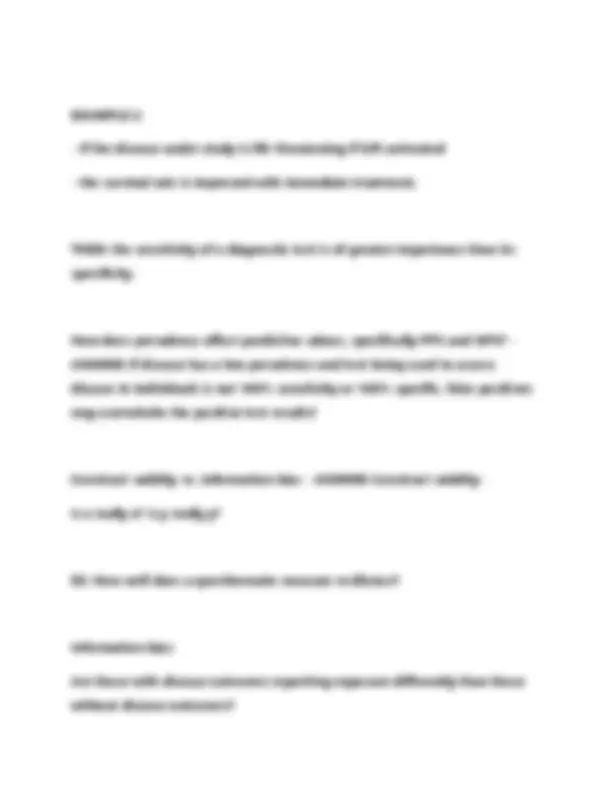
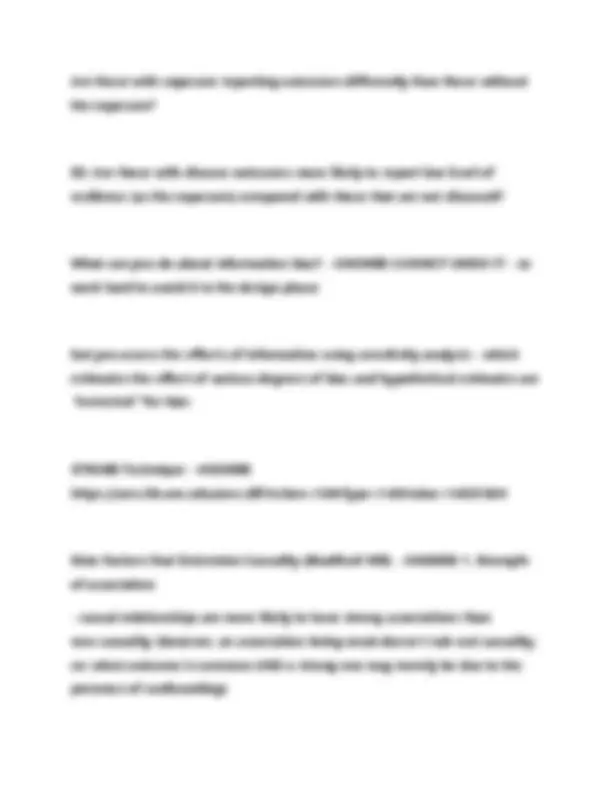
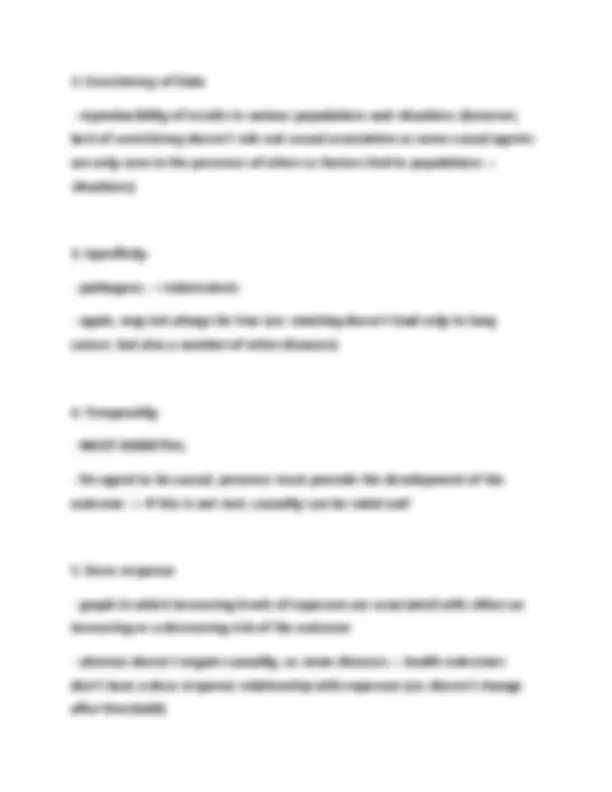
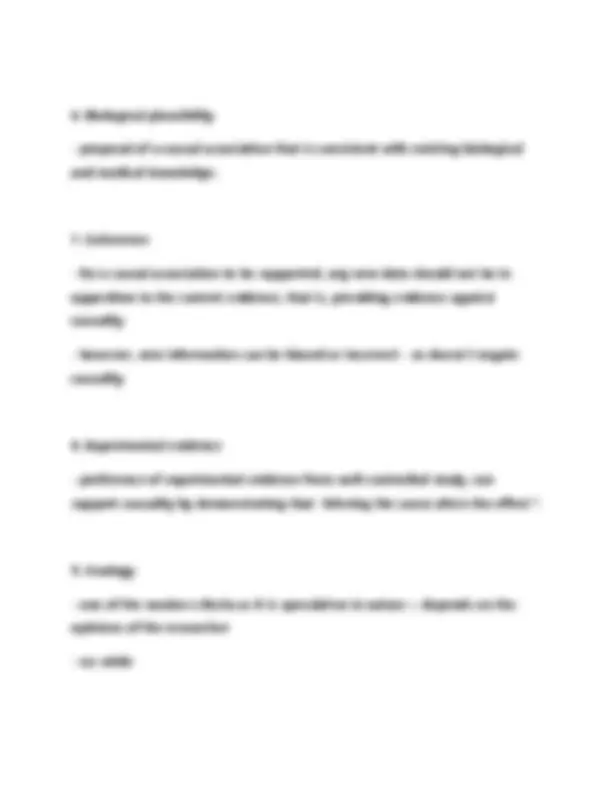
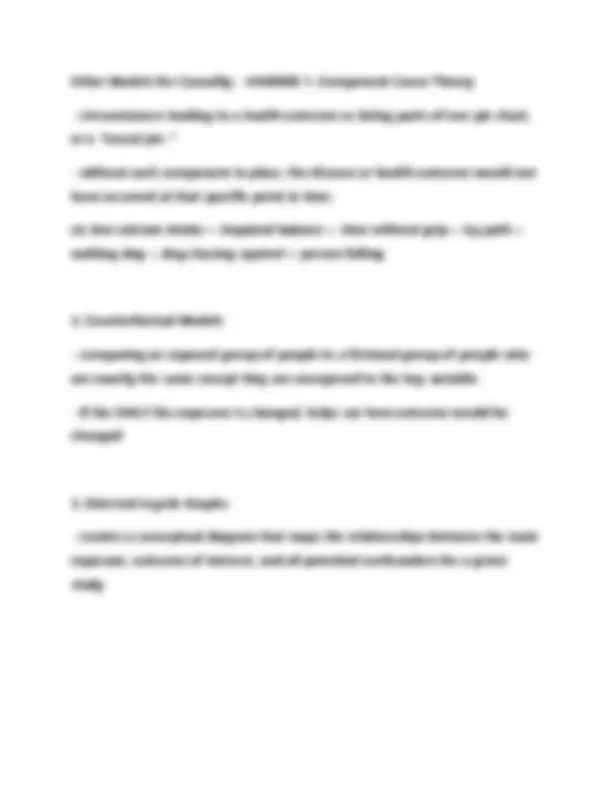


Study with the several resources on Docsity

Earn points by helping other students or get them with a premium plan


Prepare for your exams
Study with the several resources on Docsity

Earn points to download
Earn points by helping other students or get them with a premium plan
Community
Ask the community for help and clear up your study doubts
Discover the best universities in your country according to Docsity users
Free resources
Download our free guides on studying techniques, anxiety management strategies, and thesis advice from Docsity tutors
A comprehensive overview of key epidemiological concepts, including prevalence, incidence, risk, rate, and odds. It defines each term, explains its calculation, and provides examples of how to interpret the results. The document also includes a section on measures of association, such as risk ratios and rate ratios, and how to interpret their values. This resource is valuable for students studying epidemiology or public health, as it provides a clear and concise explanation of these fundamental concepts.
Typology: Exams
1 / 87

This page cannot be seen from the preview
Don't miss anything!
















































































Prevalence - ANSWER Definition:
Limitations:
Formulas:
How to interpret:
Incidence - ANSWER The proportion of the population who developed the health condition over the specific amount of time
Formulas:
new cases / total at-risk study population at baseline
Cases - ANSWER Persons who experience the outcome of interest
Point prevalence - ANSWER The percentage of people in a given population who have a given disorder at any particular point in time.
Period prevalence - ANSWER A measure of how many individuals were affected by the disease during a specified time period.
Risk - ANSWER Definition:
What does it measure?
Formula:
How to interpret:
What kind of studies use this measure?
Total Person-time at-risk - ANSWER Sum total of time all individuals remain in the study without developing the outcome of interest.
Time without developing outcome interest = time where the individuals are still at risk of developing the risk
Note: as it can be difficult to determine the exact time when a person becomes a case, investigators commonly will use the midpoint of the interval between being disease-free and becoming a case as the "onset of case"
Odds - ANSWER Definition:
Formula:
What kind of studies use this measure?
Two-by-Two Tables - ANSWER generally used to organize the data from a study
Exposed + Diseased = A
Exposed + No Disease = B
Unexposed + Diseased = C
Unexposed + No Disease = D
SO:
Diseased = A + C
No Diseased = B + D
Exposed = A + B
Unexposed = C + D
Total = A + B + C + D
Note: when a or c is a very small number, we can approximate a/a+b to (a/b) or c/c+d to (c/d)
Measures of Association - ANSWER Used to compare the association between a specified exposure and health outcome, and to compare two or more populations with differences in exposure or health outcome status - but doesn't imply that association is causal
We compare with division (ratio effect measures like risk/odds/rate ratio) or subtraction (difference effect measures like risk difference)
Risk Ratios - ANSWER Measures:
Compares the risk of those individuals exposed to the risk of those individuals who are not exposed, where the values of the risk ratio can be from 0 to infinity. Generally are measures of the strength of the association between exposure and the outcome.
Formula:
How do you interpret risk ratio values? And what does the value tell us about the type of exposure? - ANSWER How to Interpret Values:
<1: Indicates that the risk in the exposed group is less than the risk in the unexposed or less exposed reference group (so exposure is PREVENTATIVE)
=1: Indicates that there is no difference in risk or rates between exposed and unexposed groups.
1: Indicates that the risk in the exposed group is greater than the risk in the unexposed group (so exposure is HARMFUL)
OVERALL: The farther away the risk ratio or rate ratio is from 1, the greater the effect of the exposure on the study group (both beneficial/preventative and bad/harmful)
What are measures of frequency? - ANSWER These are measures that characterize the occurrence of health outcomes, disease, or death in a population. Typically descriptive in nature, and explain how likely one is to develop a health outcome in a population.
Risk difference or Attributable Risk - ANSWER Measures:
The absolute difference in risk between the two groups indicating how much excess risk is due to exposure of interest.
How to interpret:
If + -> excess risk is due to the exposure
If - -> exposure of interest has a protective effect against the outcome (ex: vaccinations).
If 0 <- exposure has no association
In words?
Benefits of using this over risk ratio:
How to interpret:
If + -> excess risk is due to the exposure
If - -> exposure of interest has a protective effect against the outcome (ex: vaccinations).
If 0 <- exposure has no association
Formula:
Incidence rate in exposed (a/total person time exposed) - incidence rate in unexposed (c/total person-time unexposed)
Rate Ratio - definition? how to put into words? how to interpret values? - ANSWER Measure that compares the rate of those individuals exposed to the rate of those individuals who are unexposed.
How do we interpret it?
How do we interpret it?
1.0: Positive association, or increased risk of developing the health outcome in the exposed group
<1.0: Negative association, or reduced risk of developing the health outcome in the exposed group (protective, like vaccinations)
=1.0: No association
In words?
Formula:
Rate ratio = (rate exposed or a/total person-time exposed)/(rate unexposed or c/total person-time unexposed)
*remember rate = Incident Cases/Total Person-time at-risk
Odds Ratio - ANSWER When do we use it?
It replaces the risk ratio or the rate ratio in case-control studies, where the underlying population at risk for developing the health outcome or disease cannot be determined because the individuals are selected as either diseased or non-diseased, or as having the health outcome or not having the health outcome.
control or b/d) OR when rearranged we get a*d x b&c
Note: we do not have odds differences!
What are the three types of exposure? - ANSWER Exposure can be preventative, harmful, or have no effect on developing the disease/health outcome in the exposed population.
What is confounding? Does it cause overestimates or underestimates of observed association? - ANSWER bias that can result when the exposure-disease relationship is mixed with the effect of extraneous factors (i.e. confounders). can cause either an overestimate or underestimate of the association between exposure and the health outcome fo itnerest.
What is the midpoint idea for calculating person-years, and when should we use it? - ANSWER CURRENTLY ADDING
Null value - ANSWER Definition:
The number corresponding to no association between an exposure and an outcome.
In Statistical Tests:
Also, the result you would obtain if the null hypothesis (the statement predicting there is no association between exposure and the health outcome) were, indeed, true. Any value obtained other than 1.0 - where 1.0 isn't in the confidence interval - would allow us to reject the null hypothesis and accept the alternate hypothesis.
e.g., risk ratio = 1.0, odds ratio = 1.0, prevalence ratio = 1.
Two sided vs. one sided tests - ANSWER One sided: Used when we have a reasonable basis to assume that direction from which the null value exposure is likely to be associated with only one direction
Two Sided: Used when we have no basis for predicting in which direction from the null value exposure is likely to be associated with the health outcome (aka we don't know if exposure is beneficial or negative)
-EX: Children of smoking mothers will have either a higher or lower incidence of asthma than other children
P-value - ANSWER Defintion:
Exposure of the probability that the difference between the observed value and the null value occurred by chance or because of sampling variability.
Interpretation:
In words:
The 95% CI of (lower bound, upper bound) does not contain the null value and is statistically significant.
Benefits over P-value:
Contains information on both the size of the sample and variability of the sample
How do sample sizes impact CIs?
What is borderline significance?
Crude estimates vs Adjusted Estimates - ANSWER Crude Estimates: Simple measures that do no account for other factors that may be driving the estimate
Adjusted Estimates: Measures that account for other factors that may be driving the estimate; allow for controlling of cofounders or accounting of effect modifiers in analyses via gender, race, SES, smoking status, family history, etc.
What happens if we want to use greater/higher/more or less/lower to ratios like risk ratio? - ANSWER If you add words like greater, higher, or more (when ratio >1.0), you have to subtract 1 from your measure of effect.
If you add words like less or lower (when ratio <1.0), you have to subtract the ratio measure from 1.
If you just say as likely, you don't need to modify the ratio at all!
What considerations do we need to take into account w/ RCTs that we don't usually see with observational research? - ANSWER 1) Unless researchers are genuinely uncertain about the potential harms or benefits of a treatment, typically unethical to assign it to one group of people while withholding it from others (equipoise) - which limits the kinds of questions we can get.
What are the types of RCTs? - ANSWER Placebo-controlled randomized trials: RCTs where the control group is untreated
Active-controlled randomized trials: RCTs where the control group undergoes a gold-standard regiment against which the new regiment will be assessed.
How does randomization avoid bias? - ANSWER Eliminates the baseline differences in risk between control and treatment groups by making both groups similar in terms of distribution of risk factors, regardless of whether risk factors are known or unknown (like confounding variable)
How does the size of the randomized groups impact our ability to remove risks? - ANSWER The larger the randomized groups, the greater the probability of equal baseline risks.
Are participants in RCTs representative, and if not how does this impact our study? - ANSWER No! This means that there may still be selection bias and limits generalizability.
What methods do we have to randomize study participants? - ANSWER 1) roll a dice or use a random number table to put individuals in different groups
What questions do you ask to identify the study design? - ANSWER 1) When were the exposure and outcome measured (with respect to investigator)?